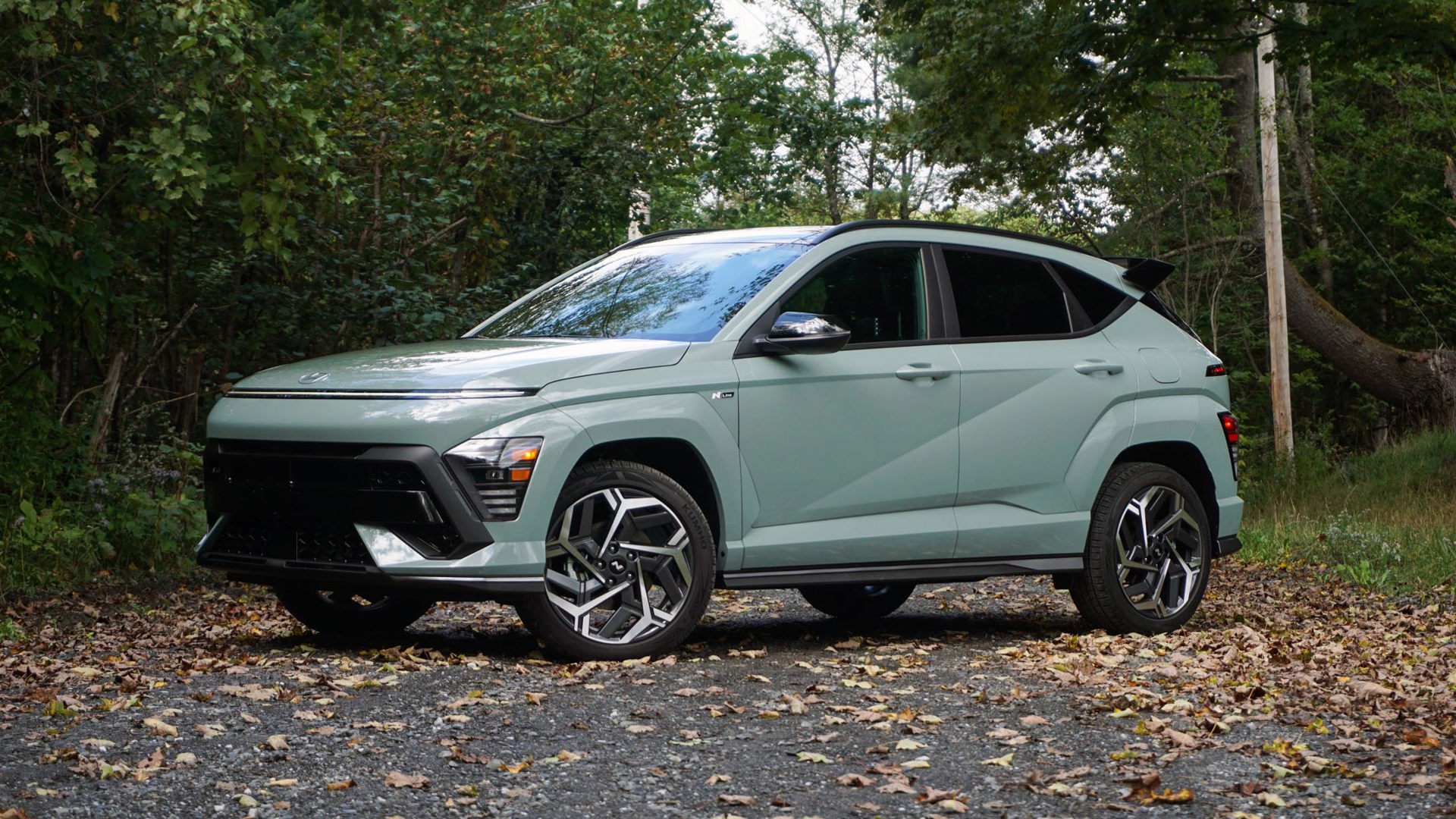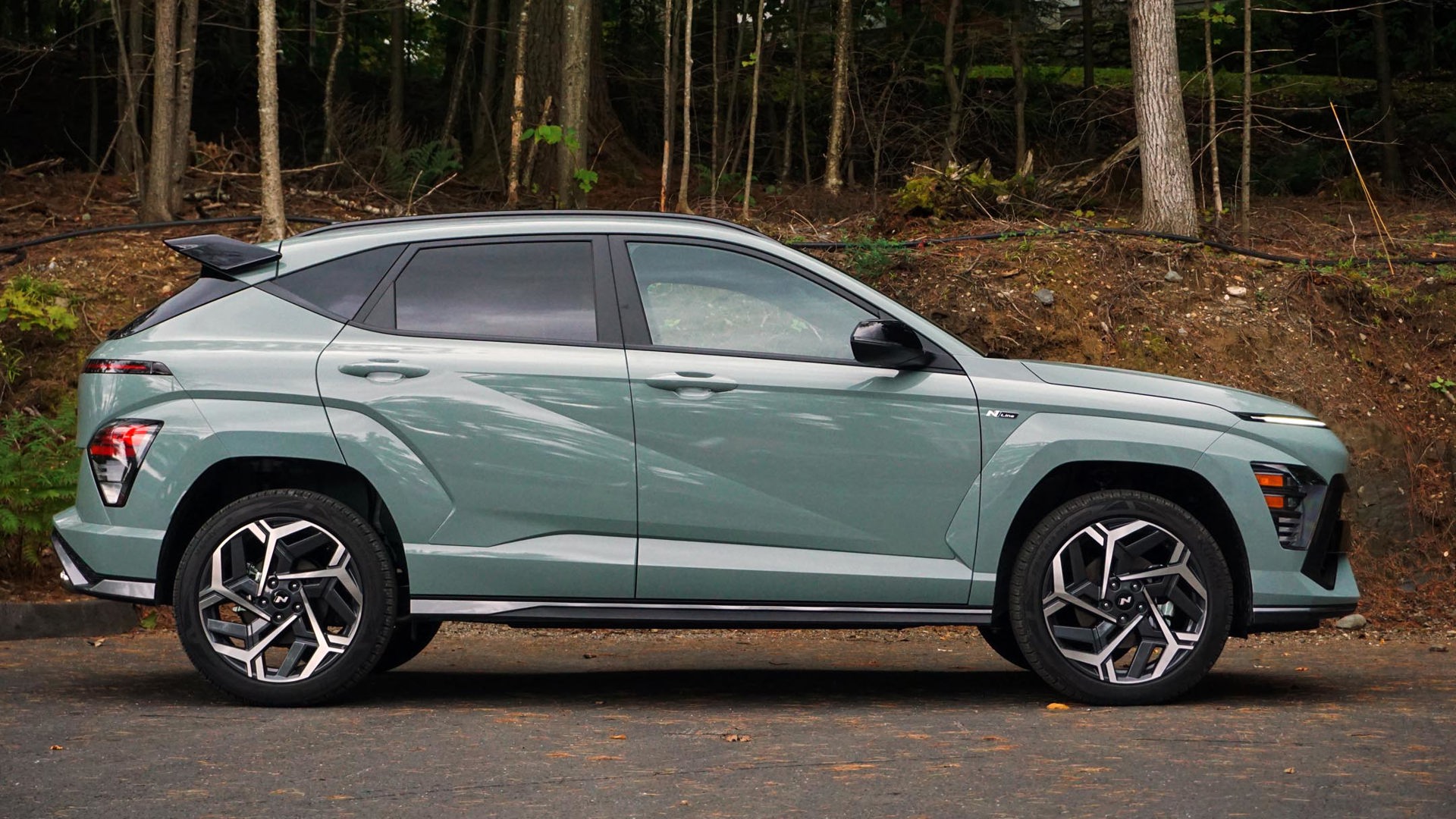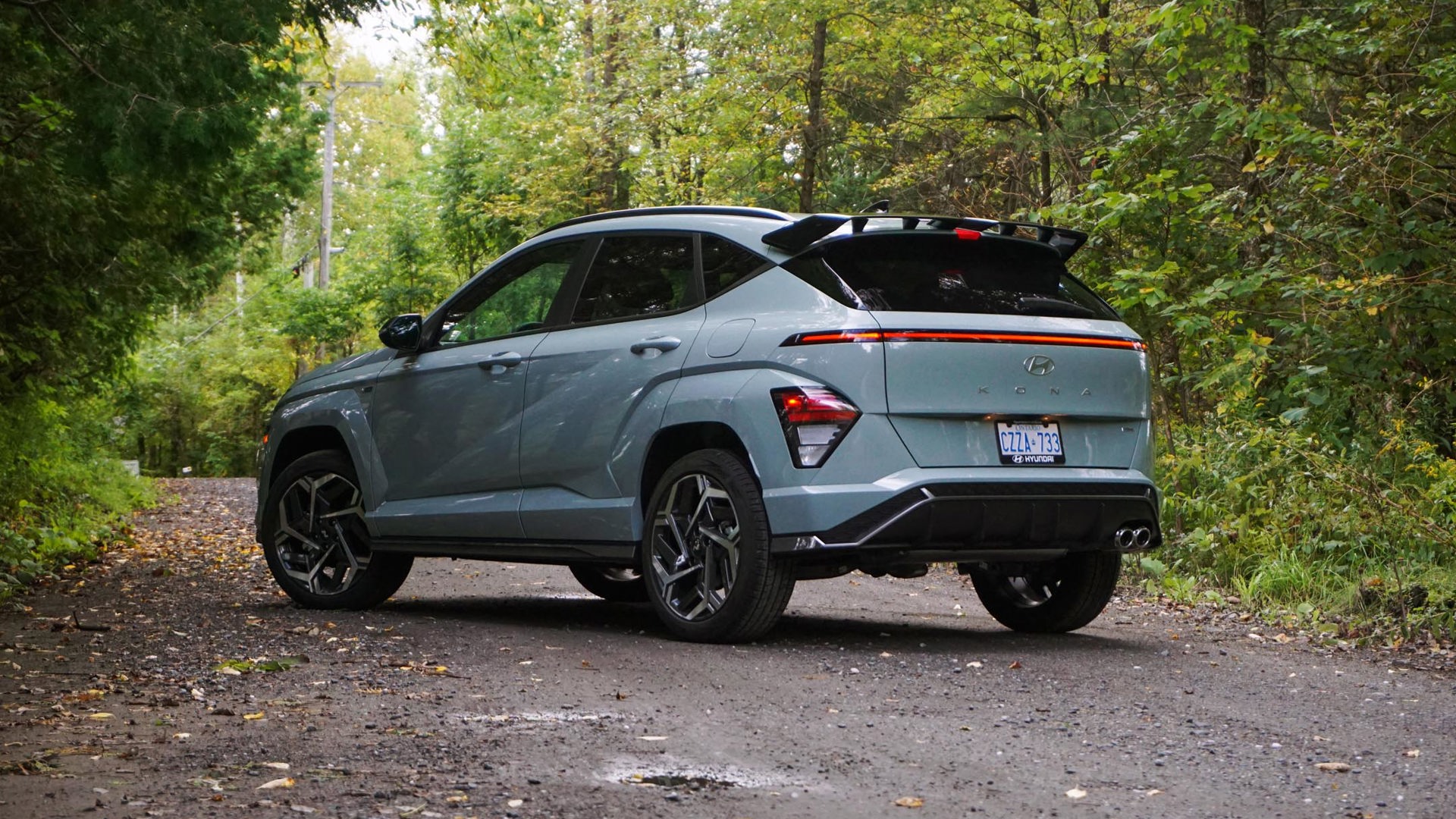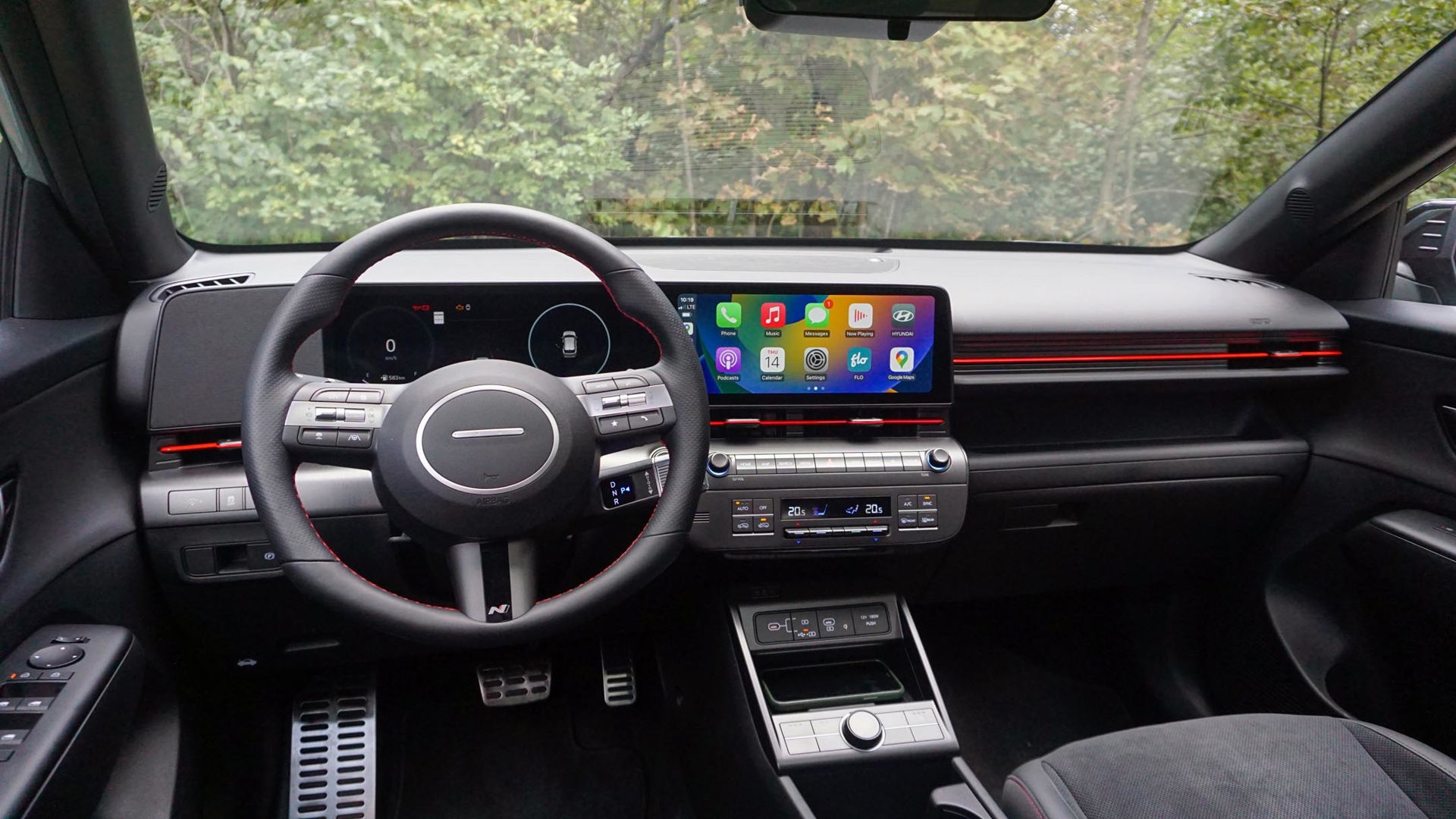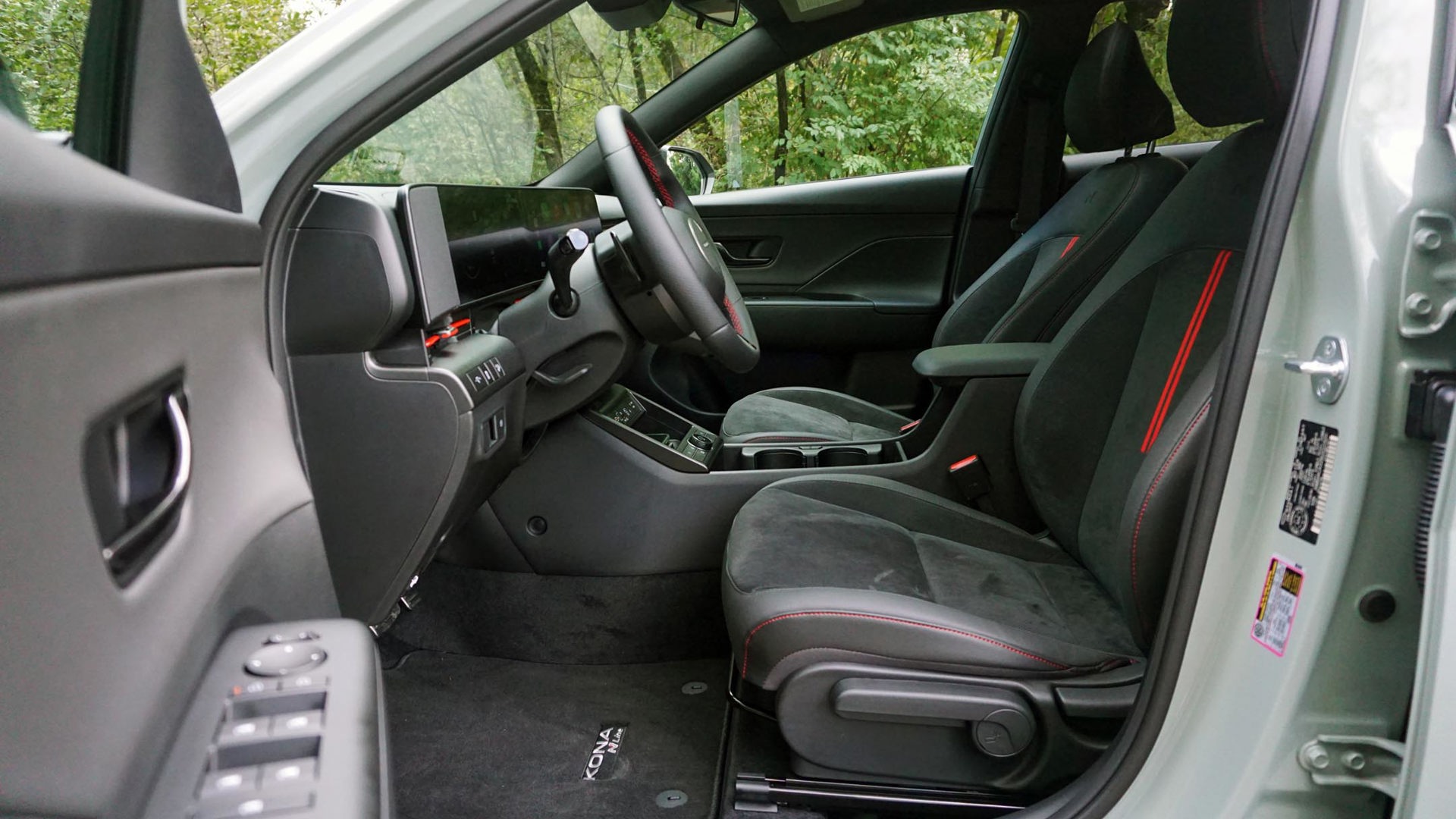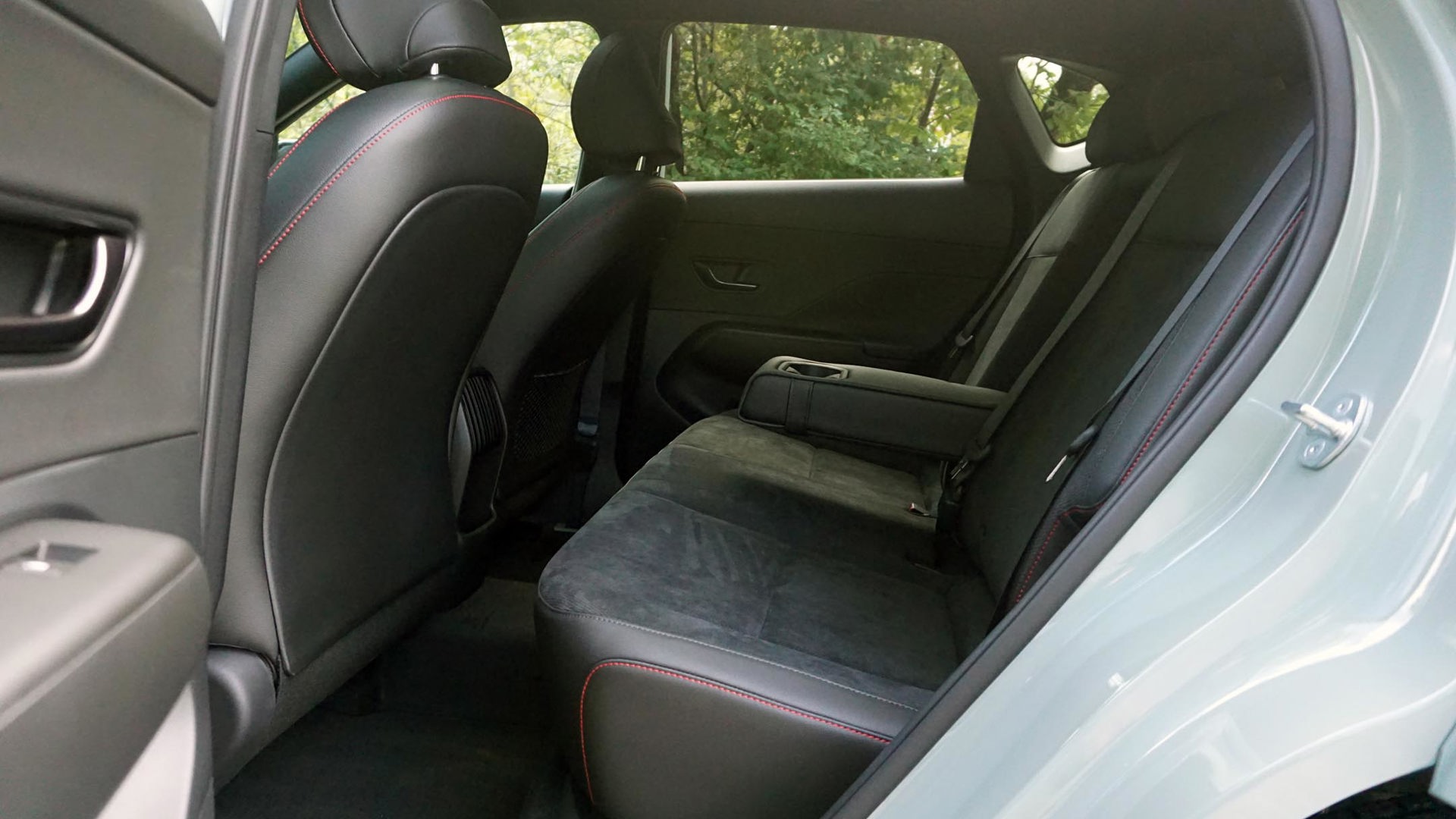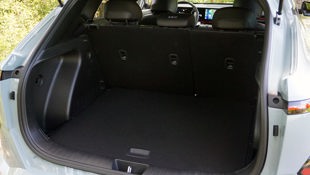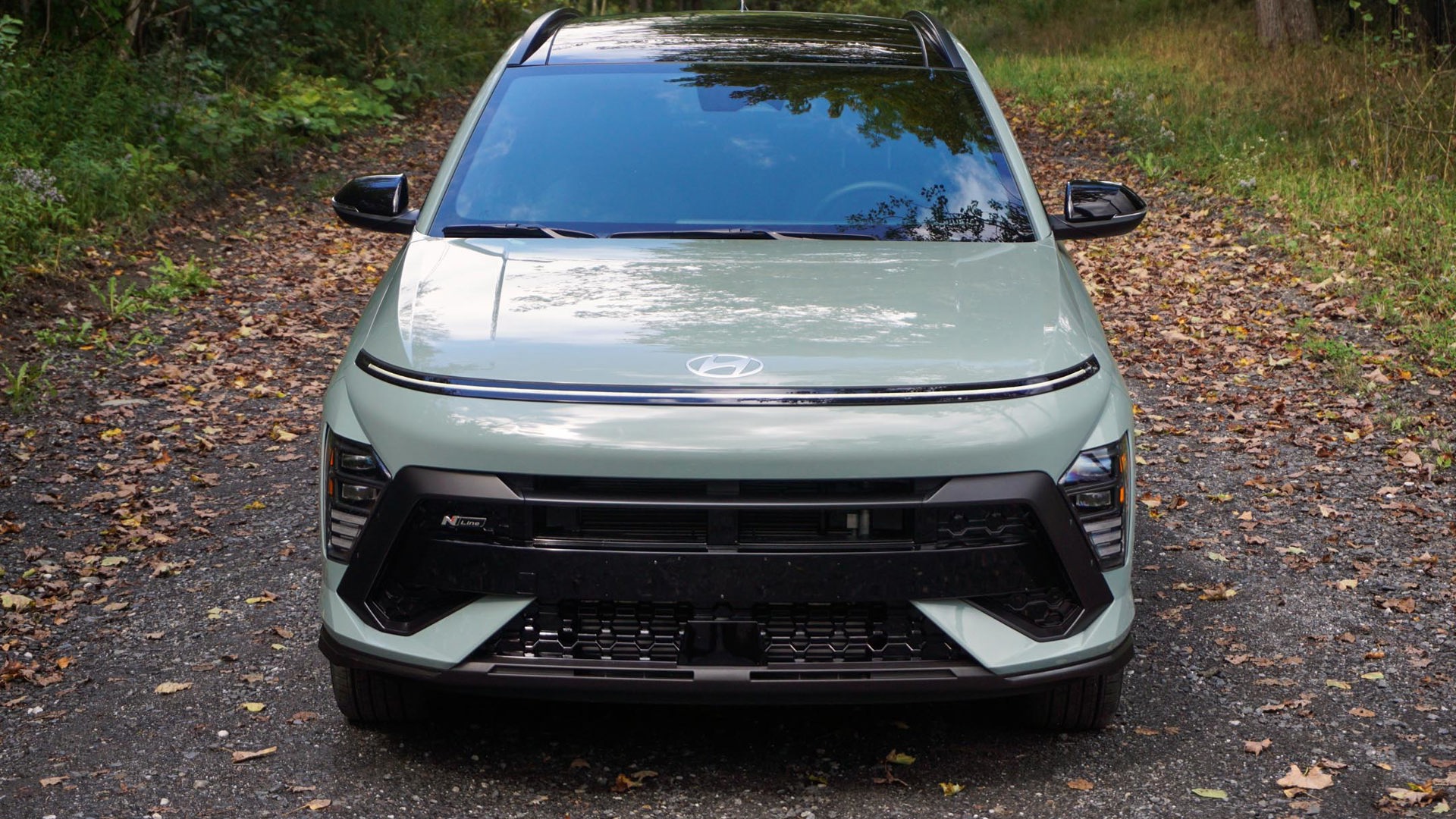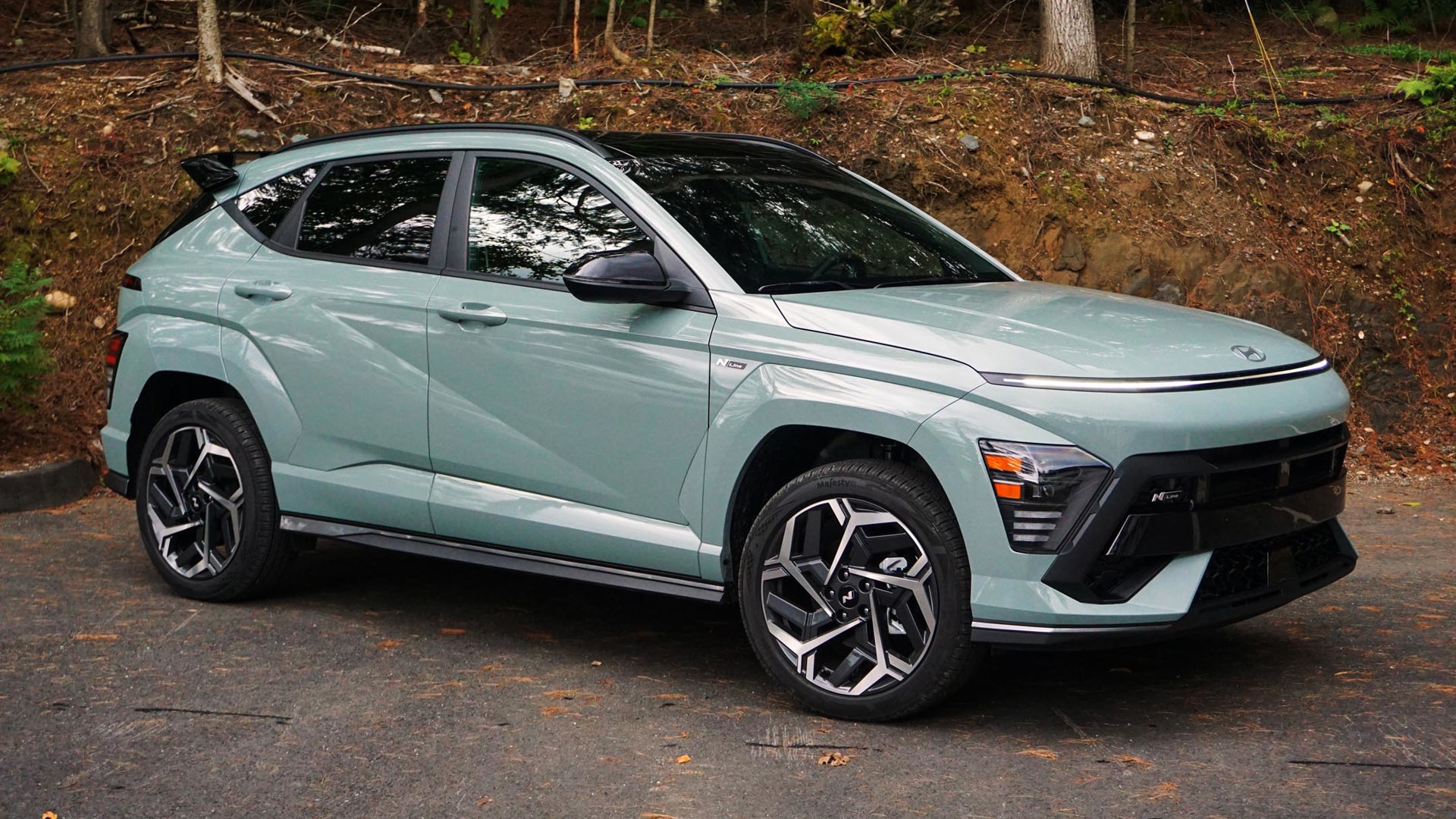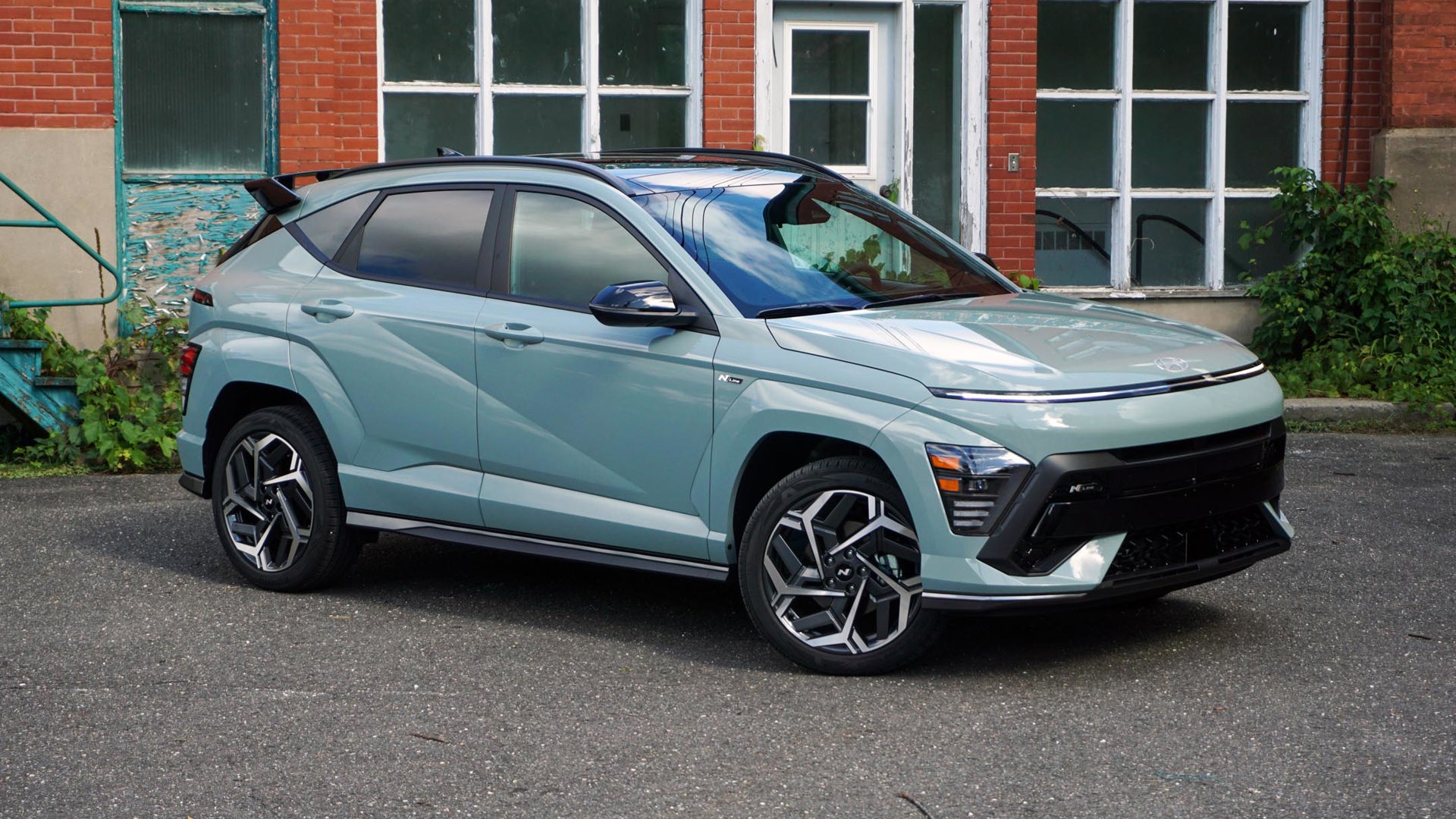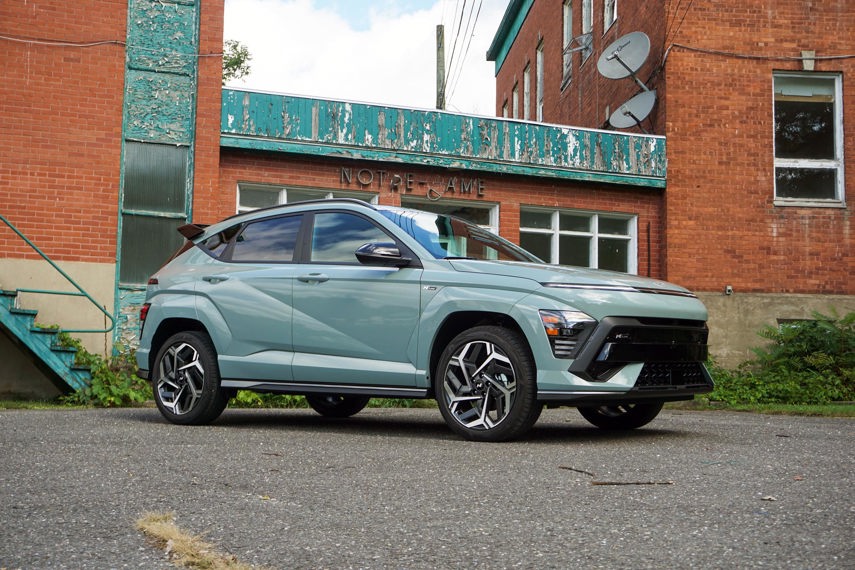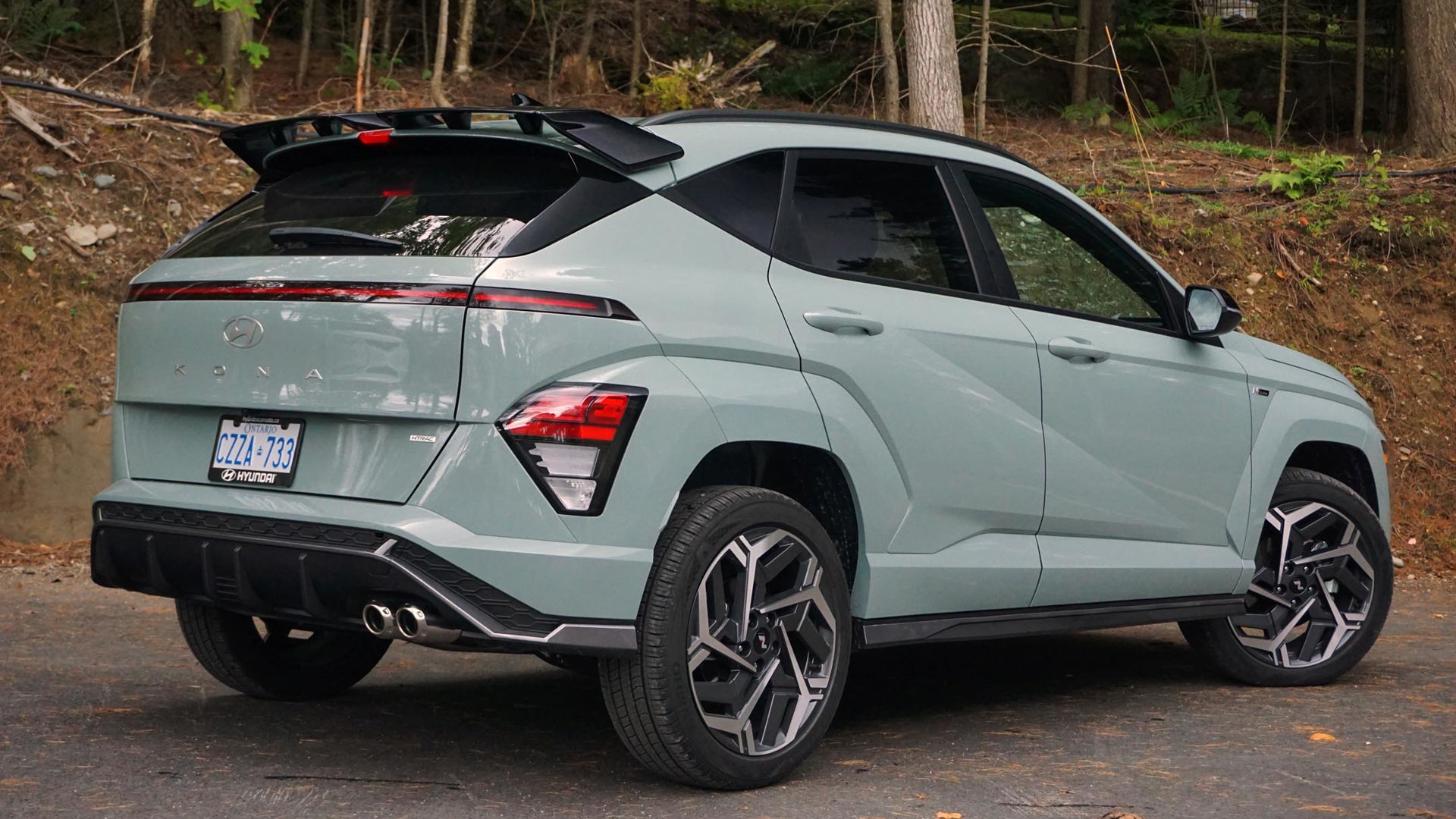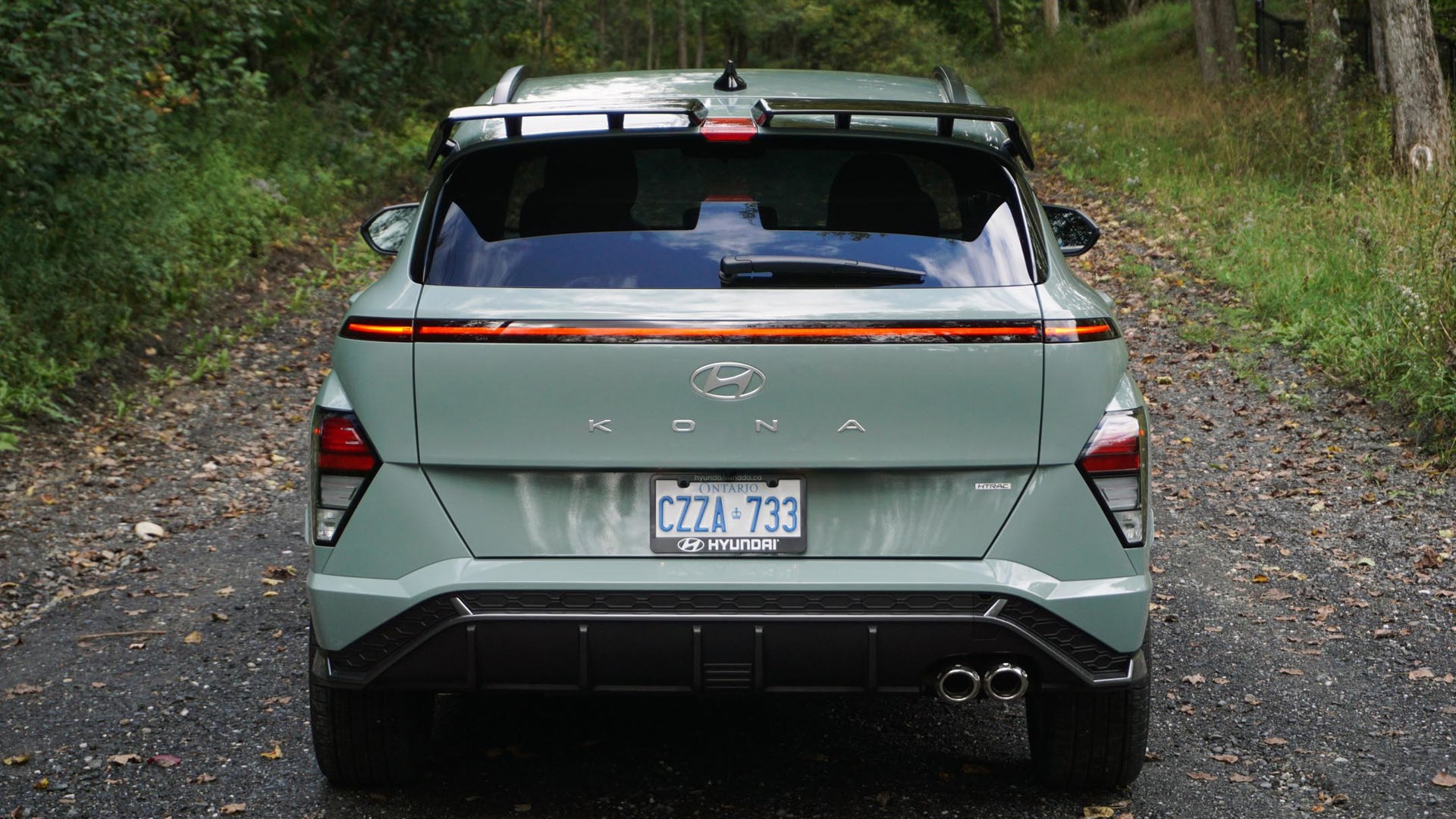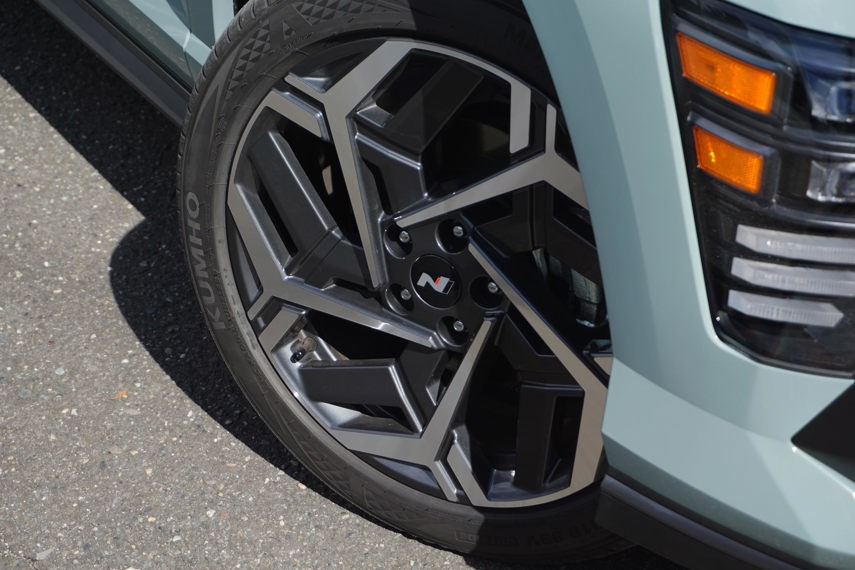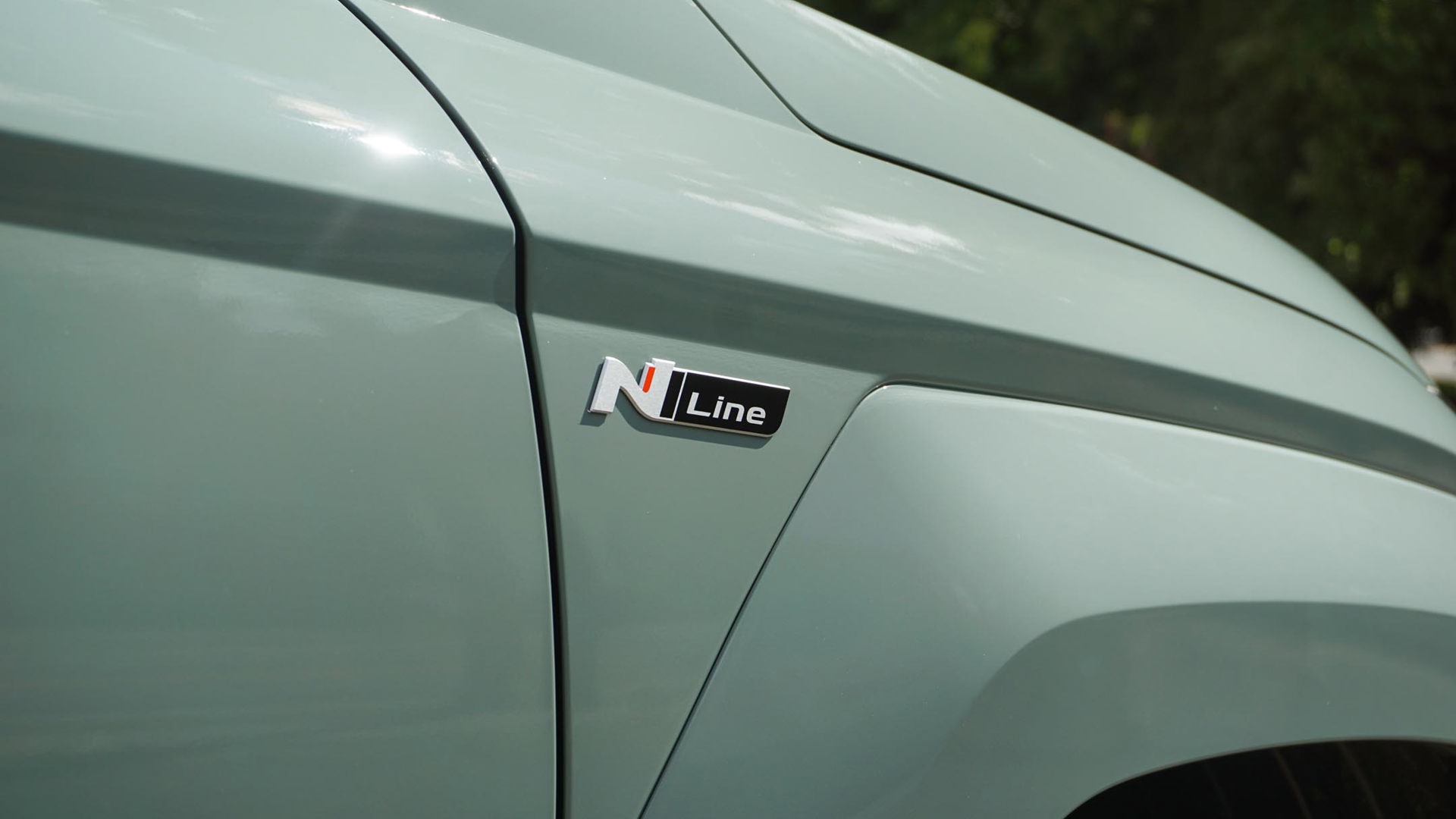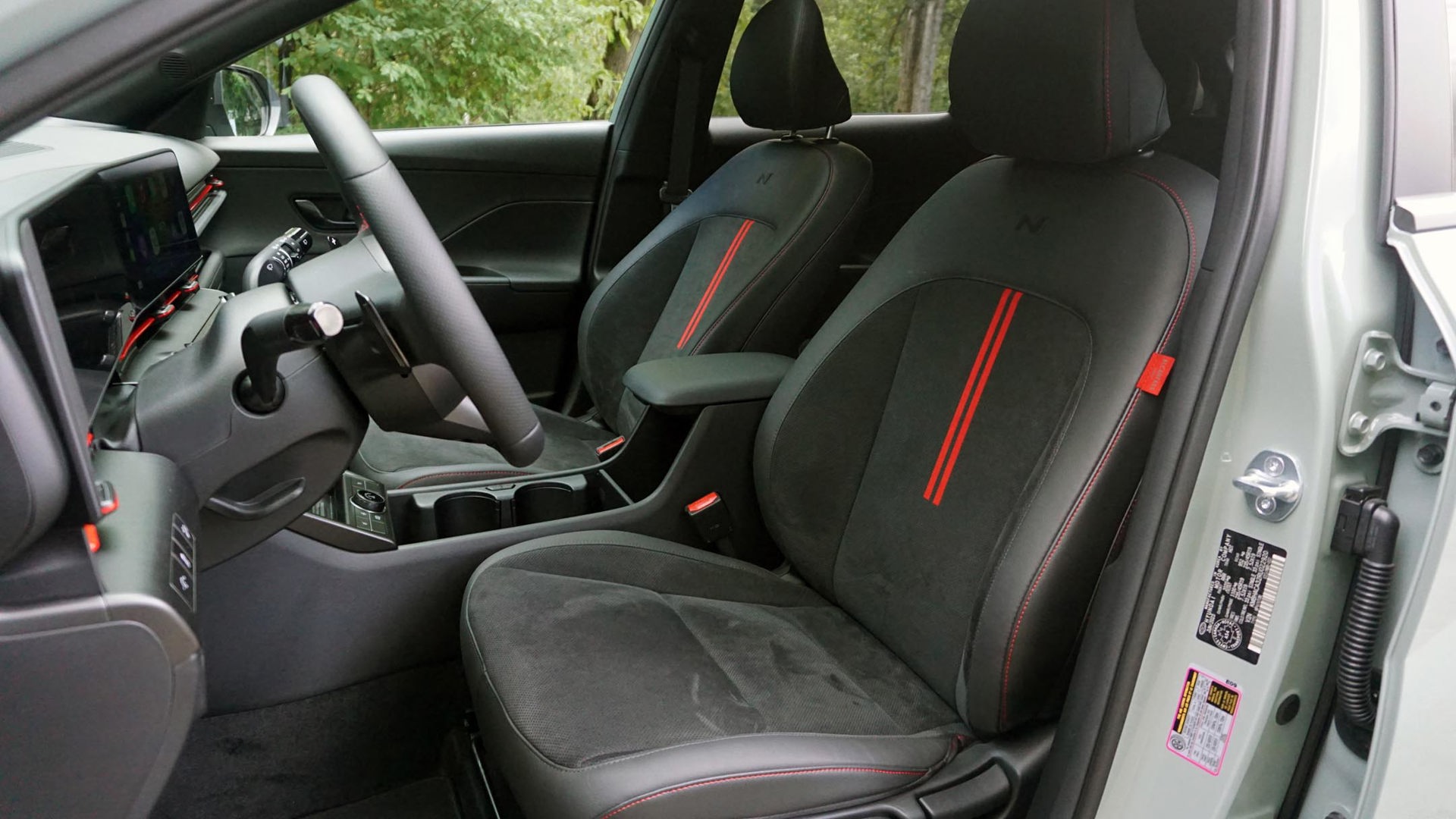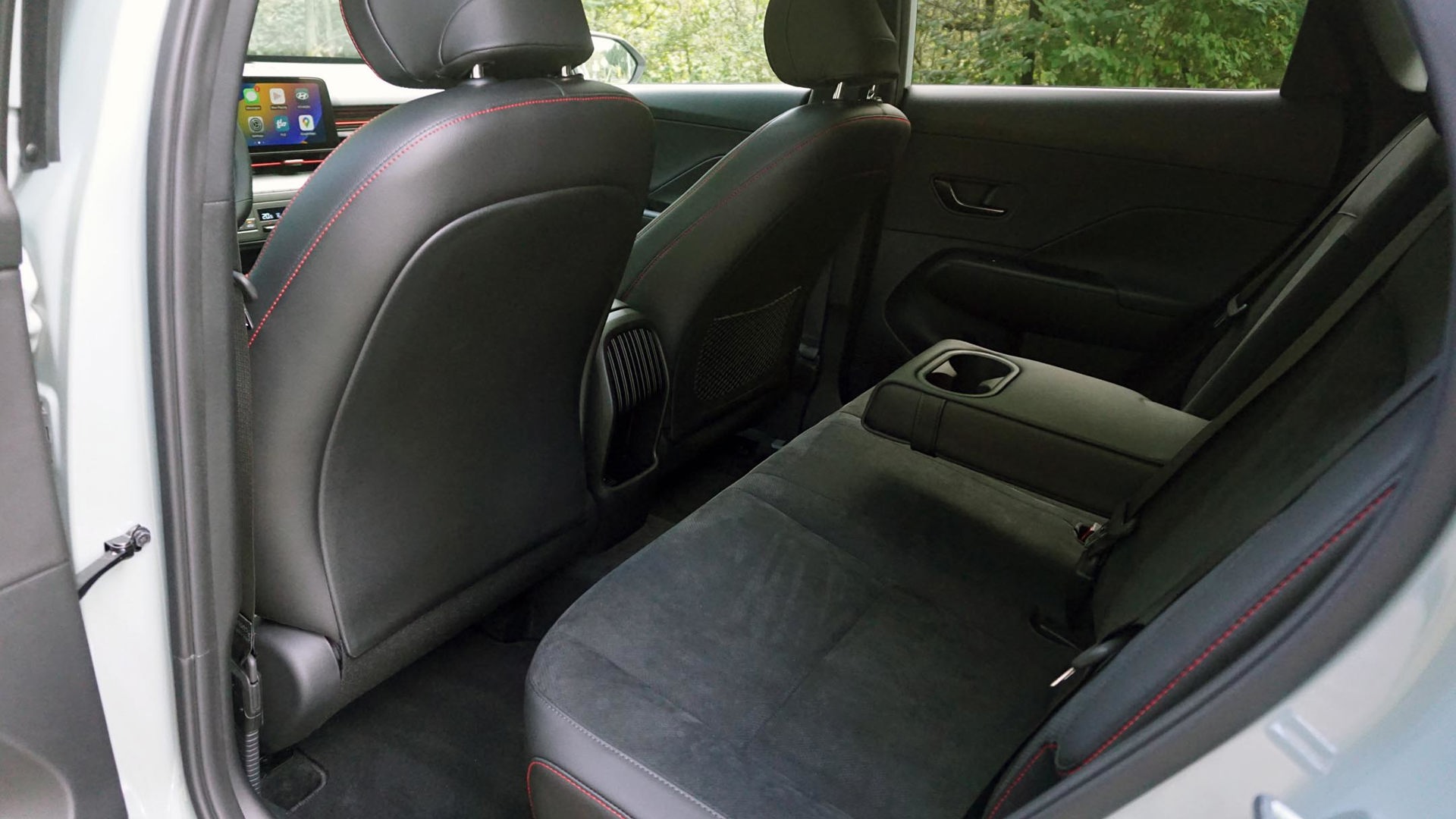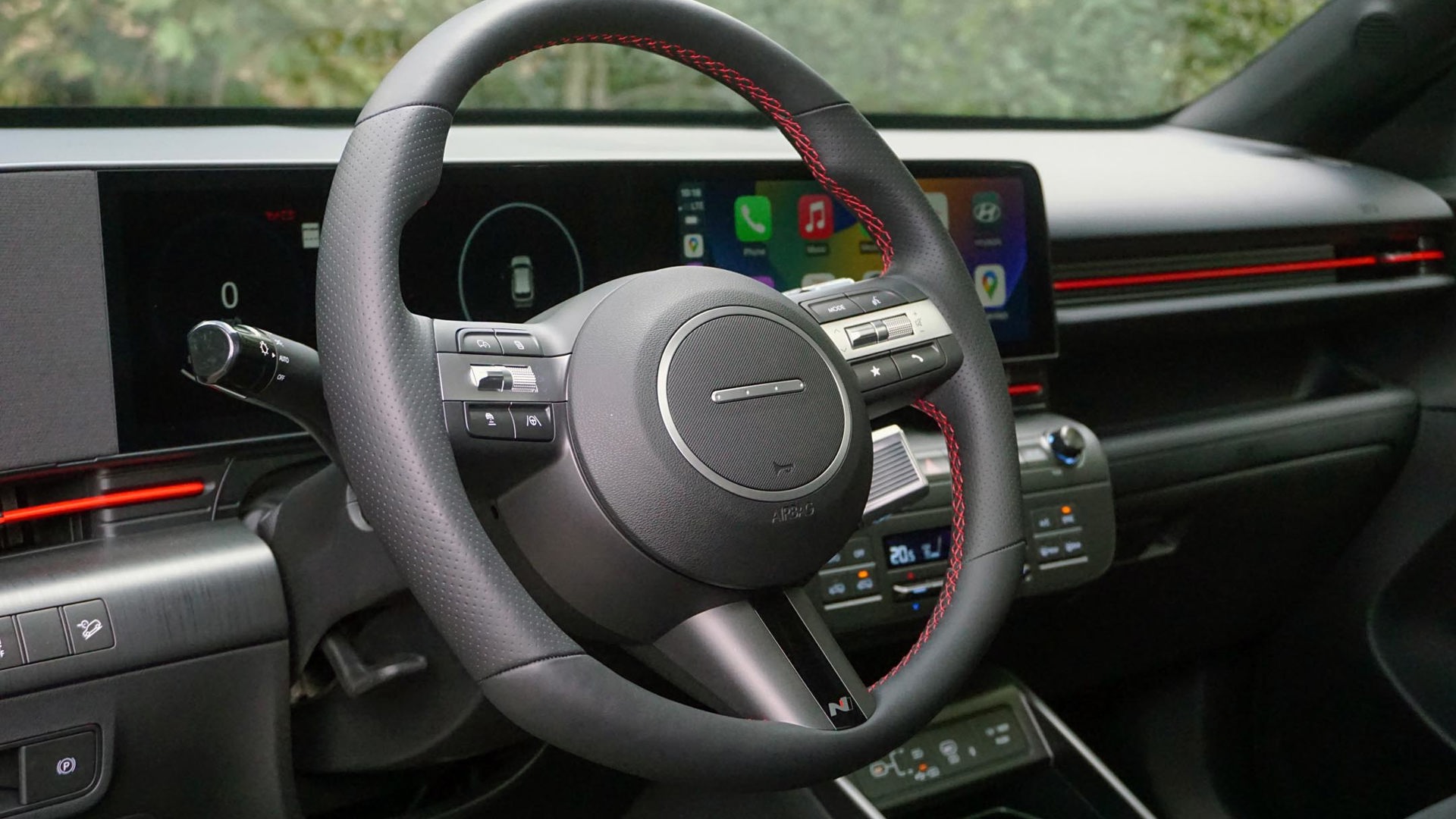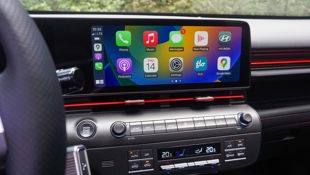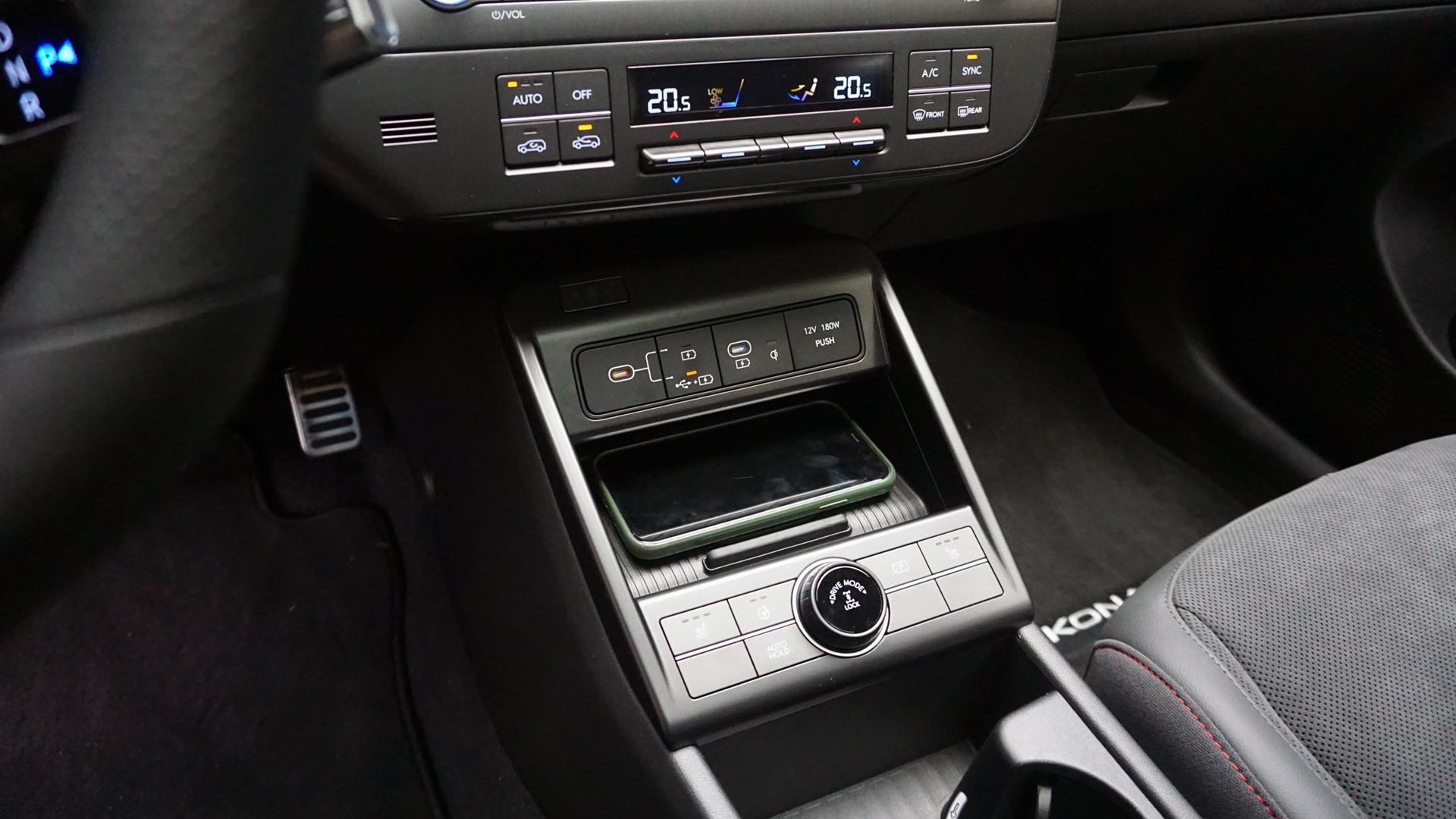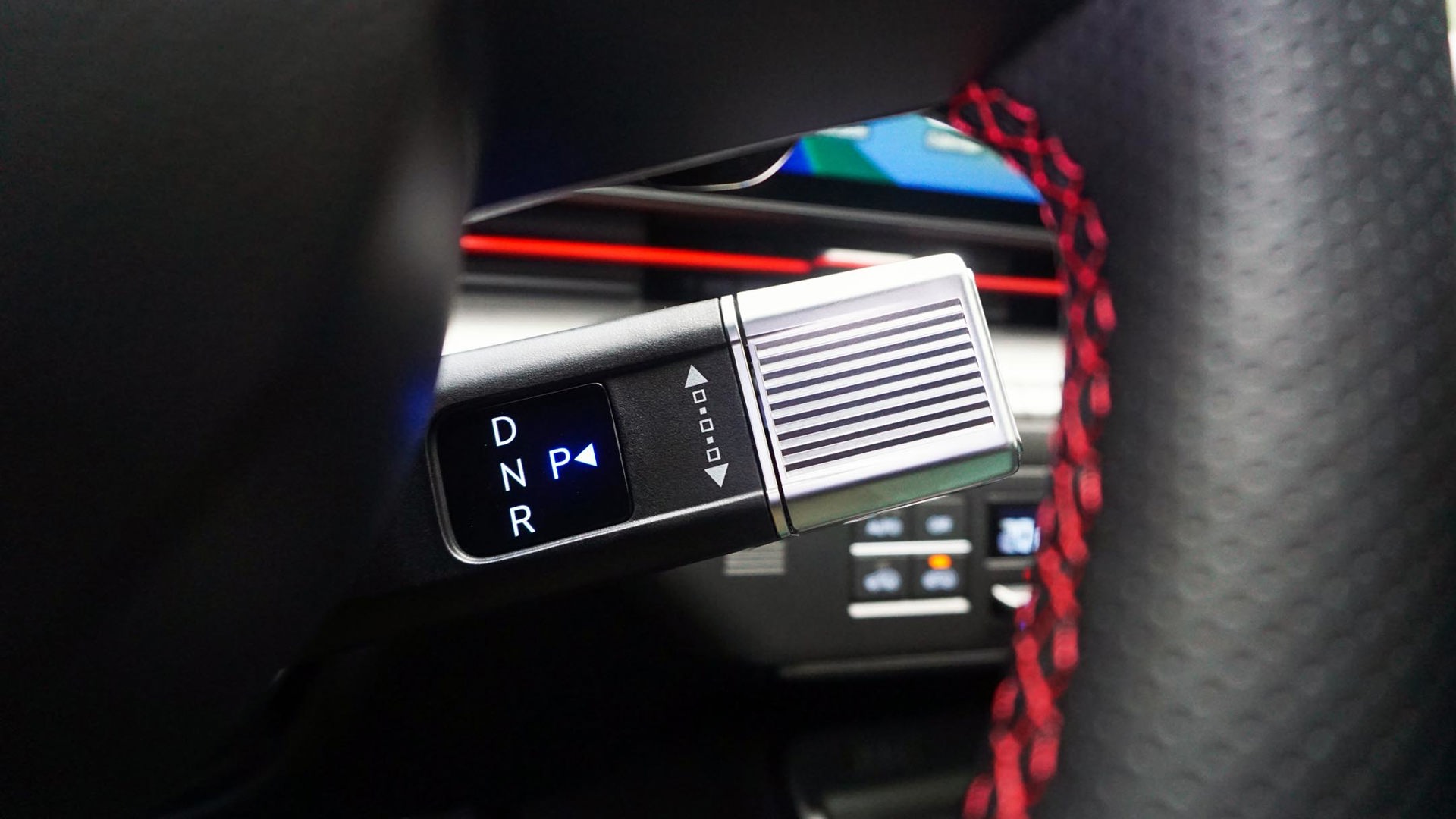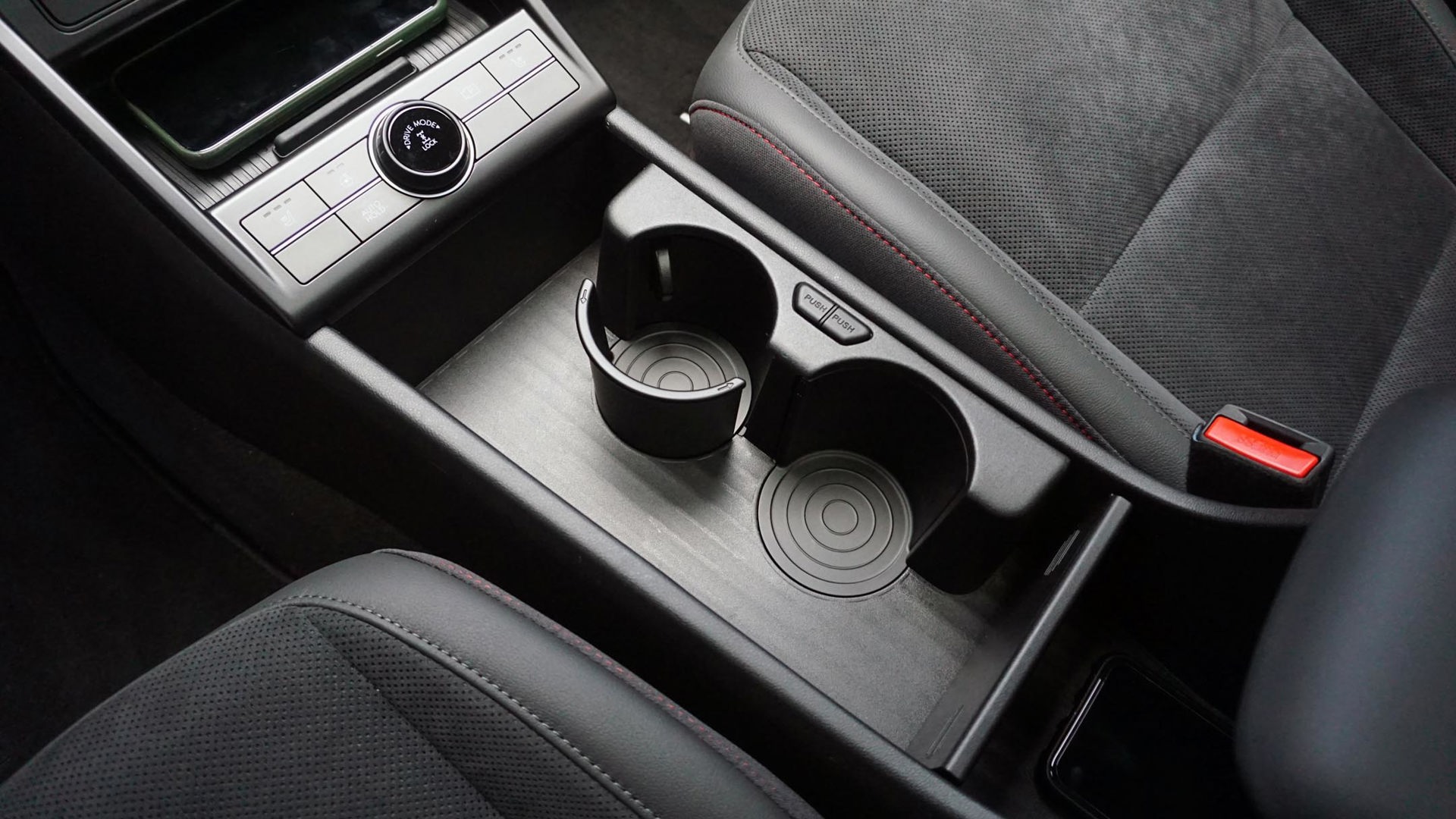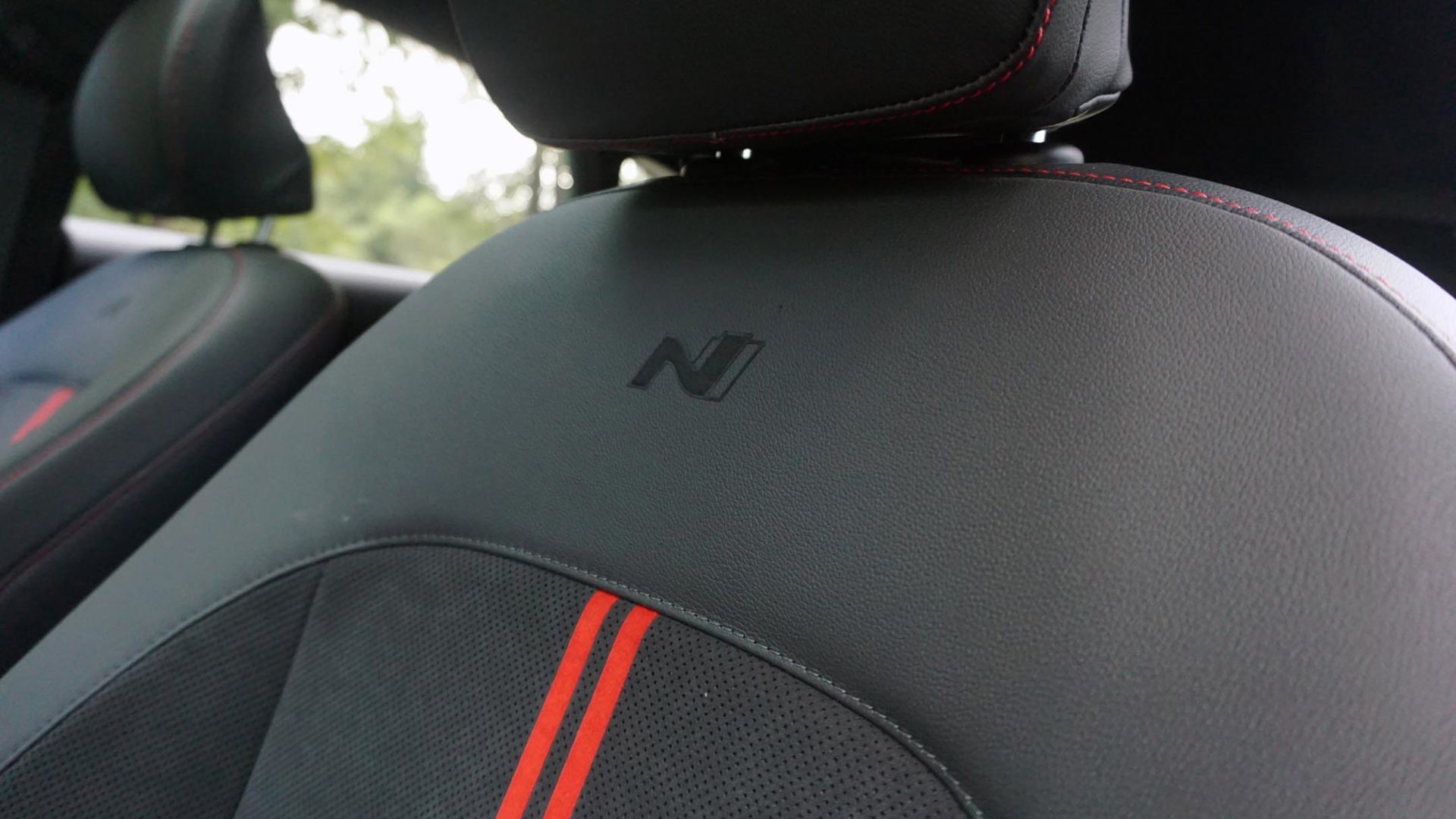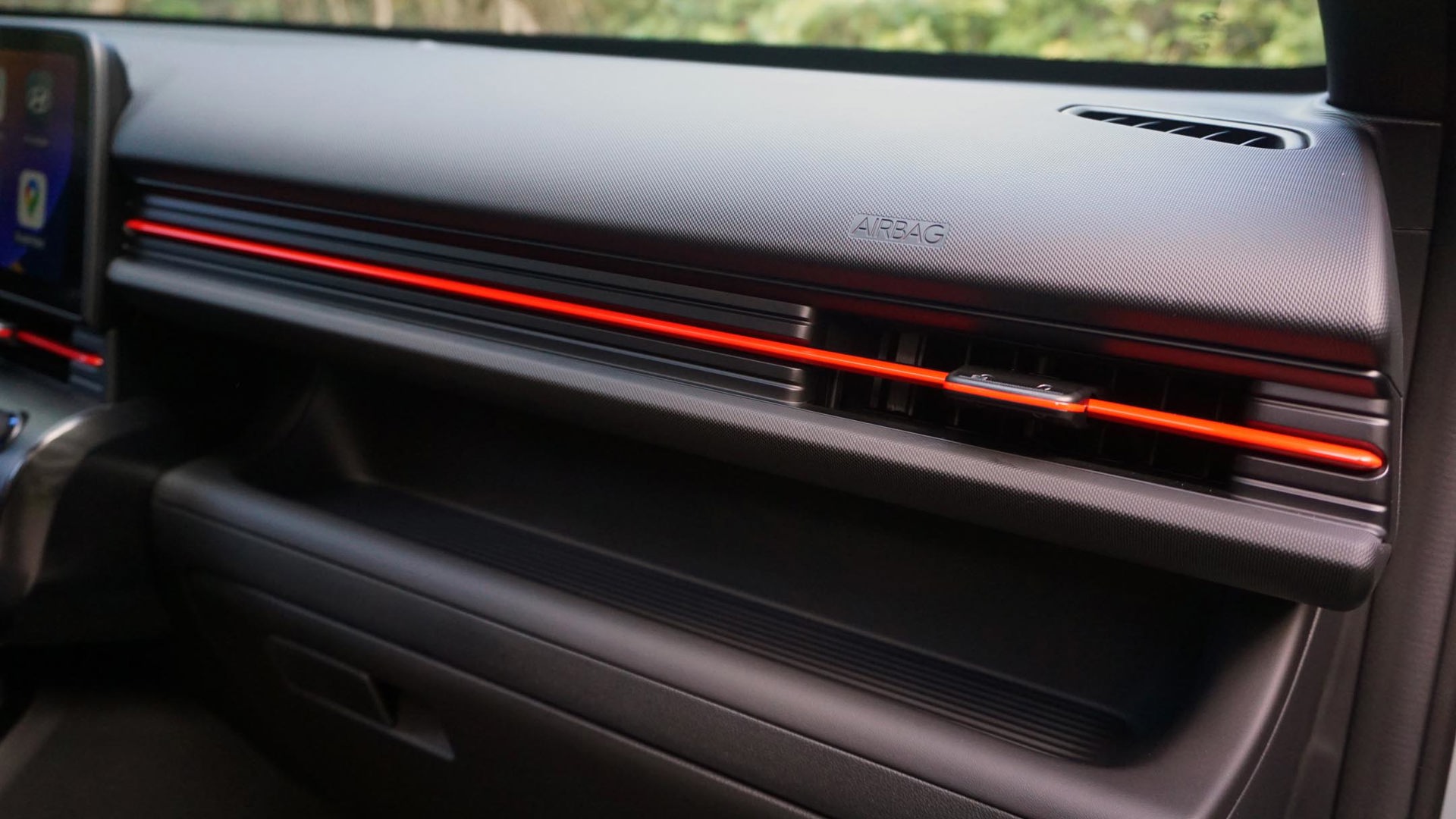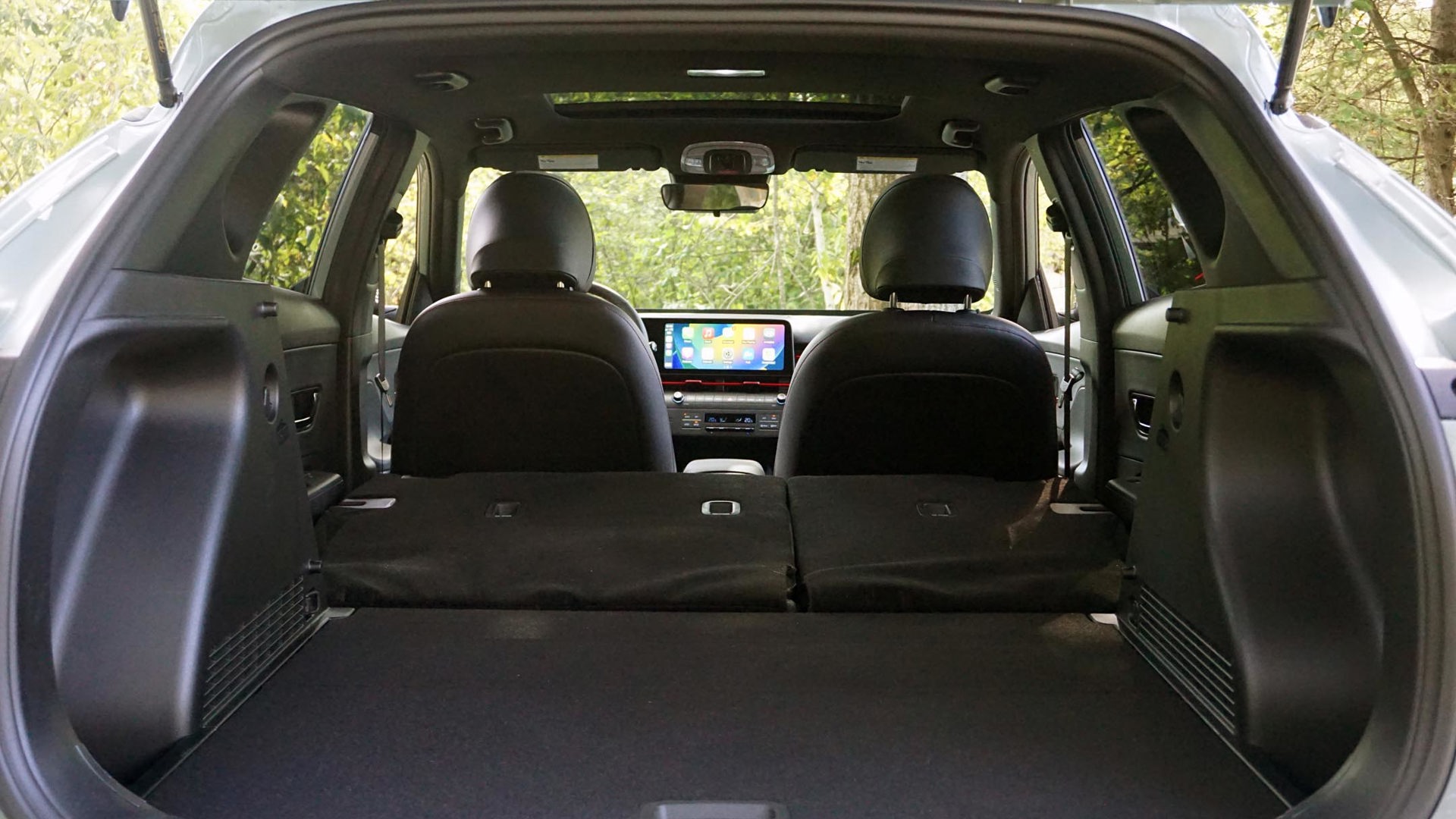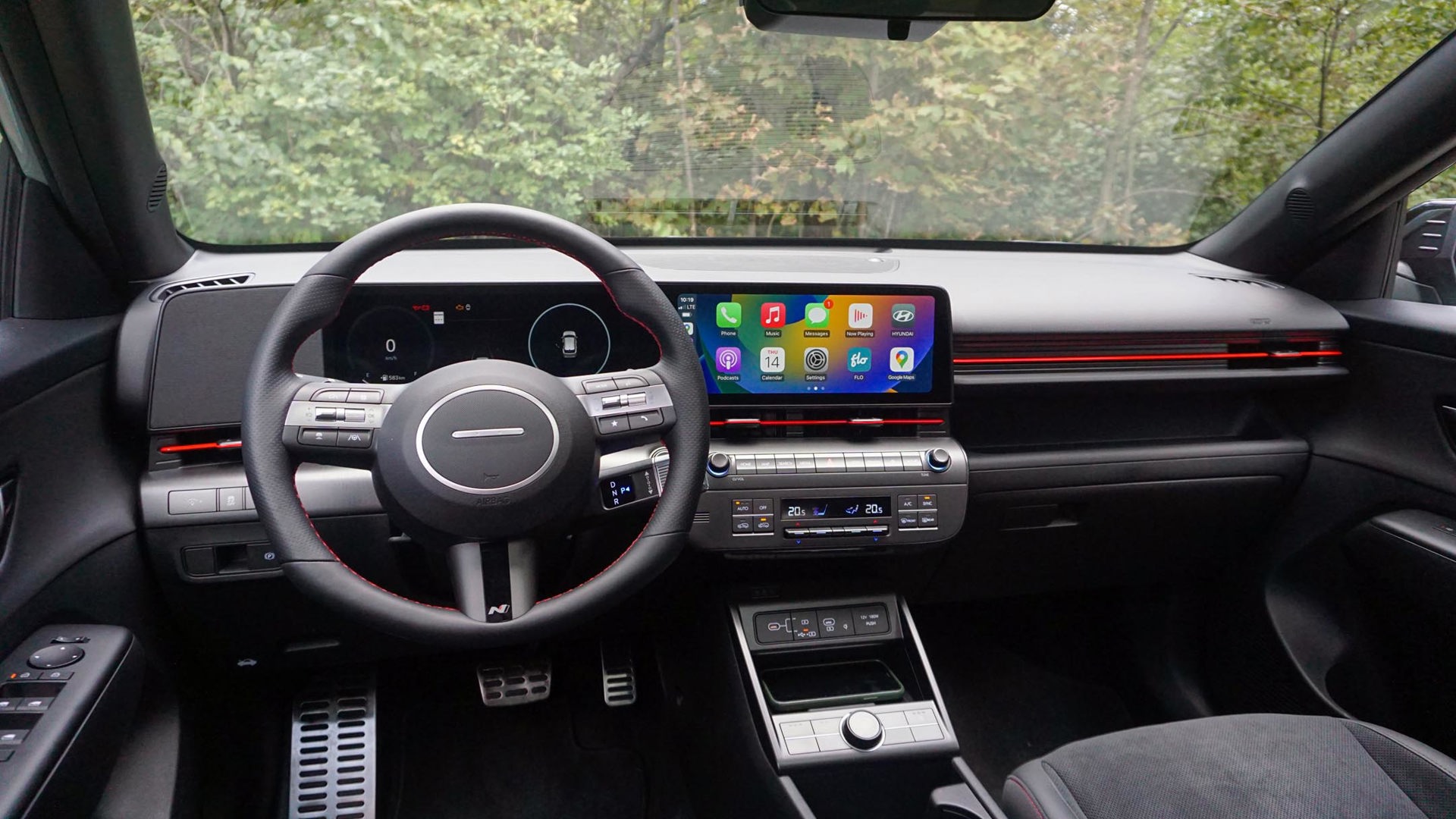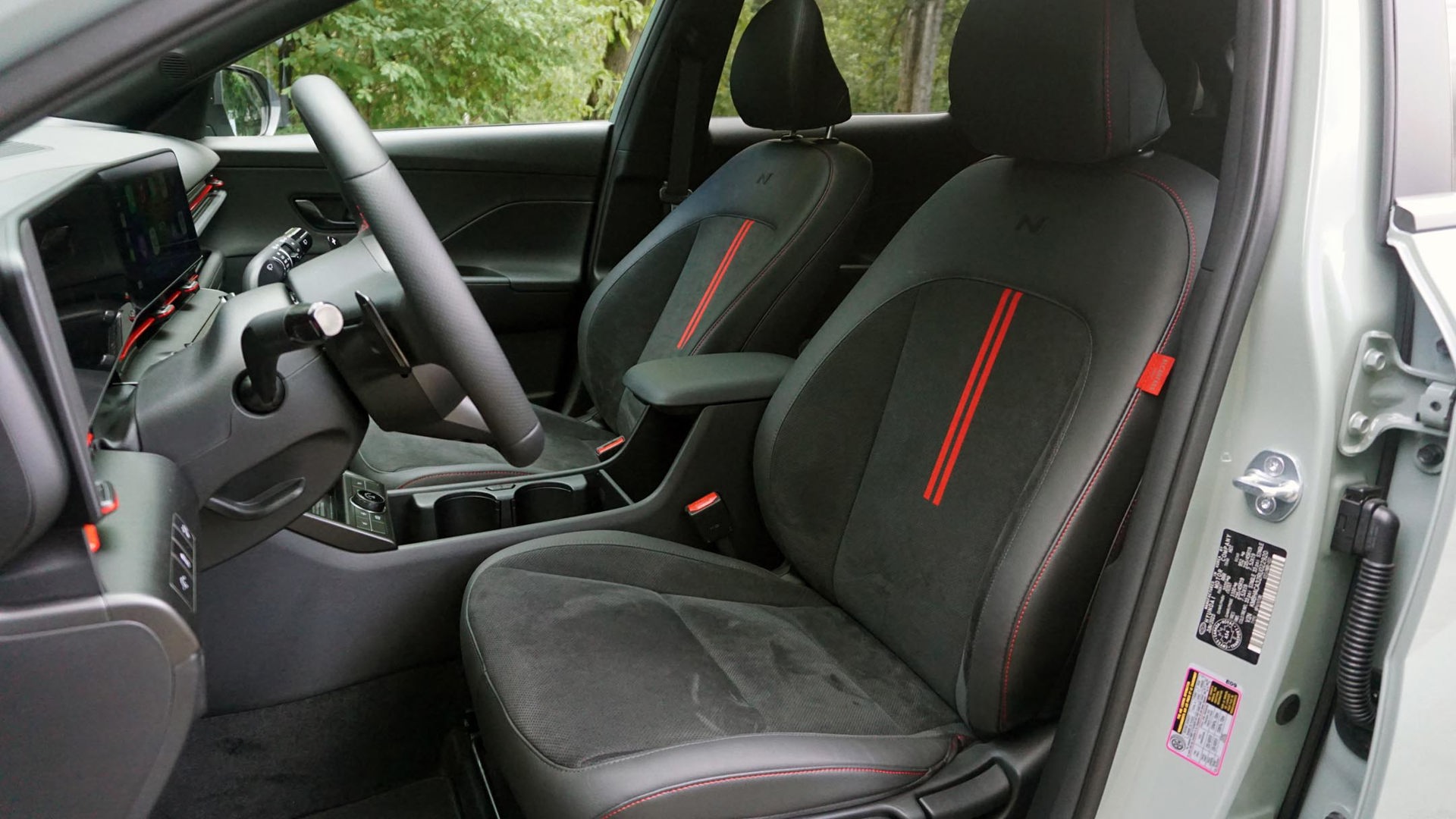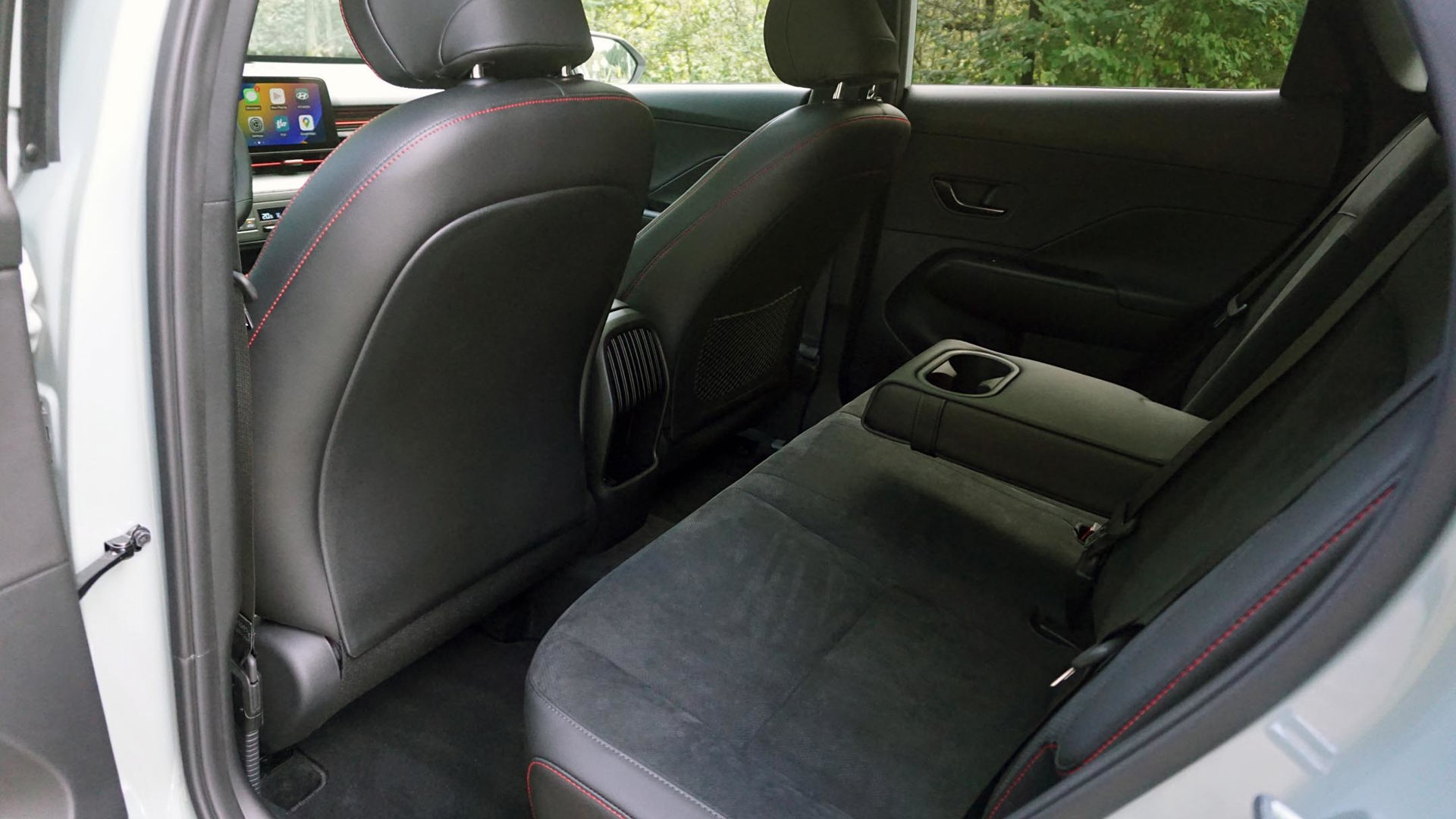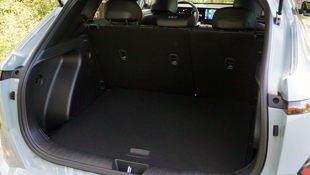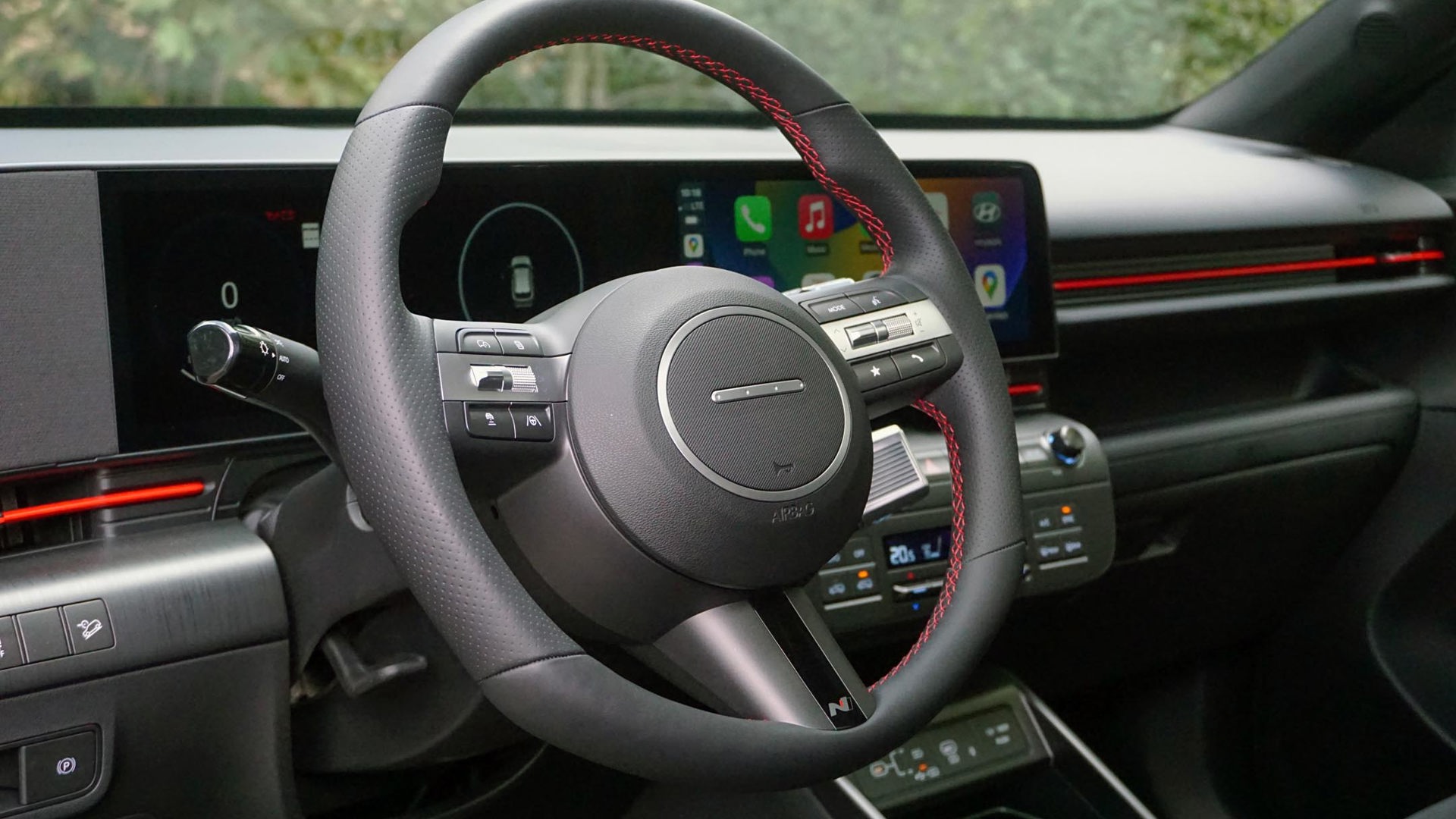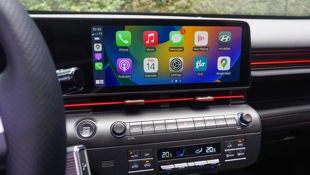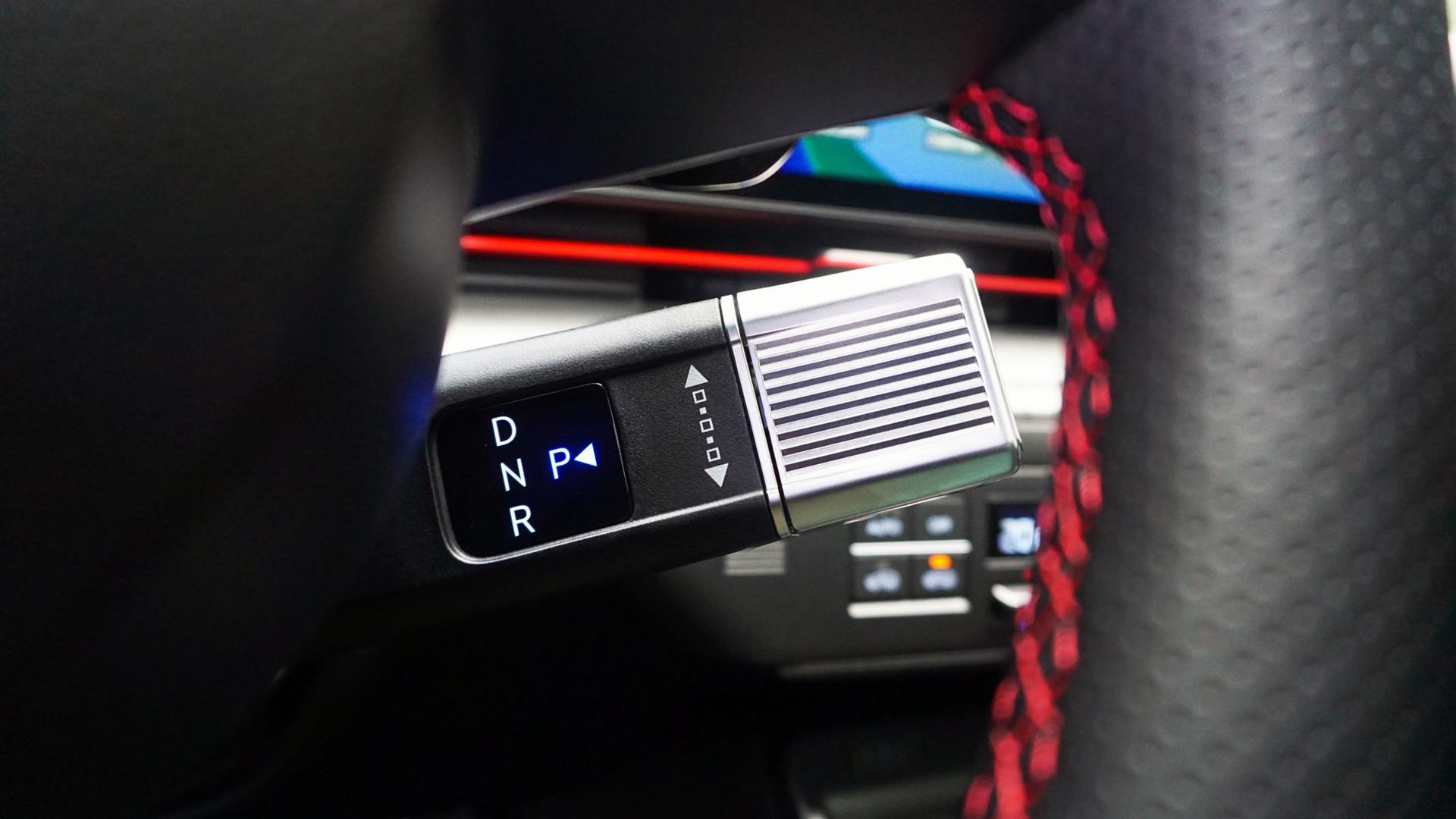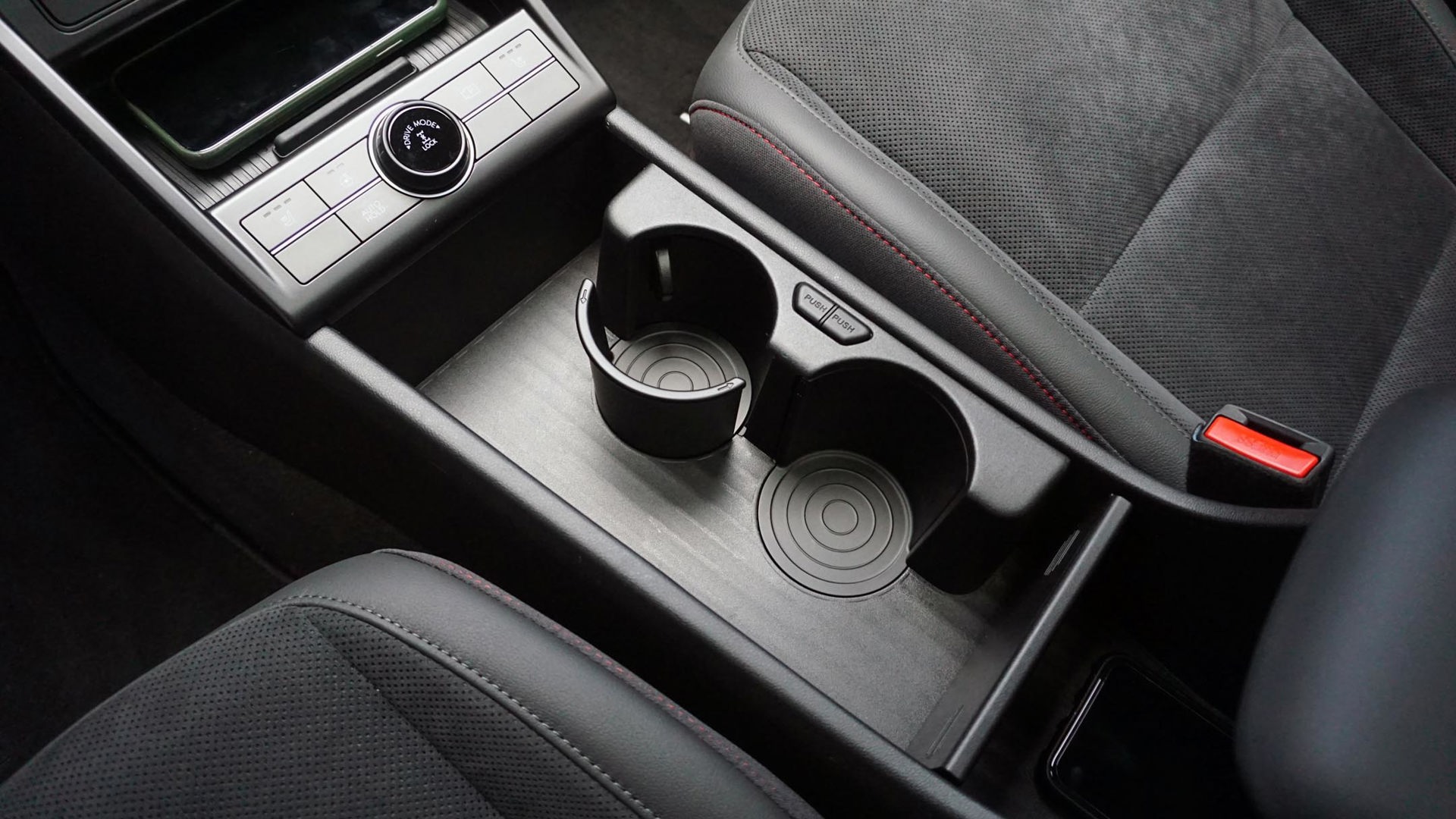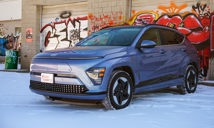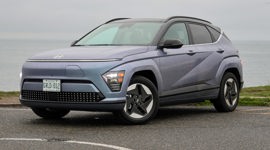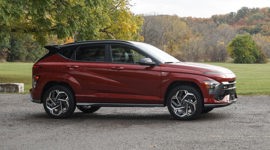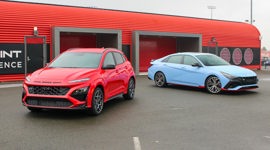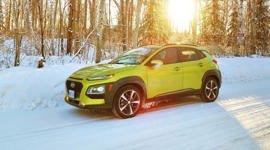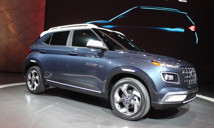Kia pulled off quite the caper when it launched the Seltos.
Here was a subcompact crossover that took the essentials of its corporate cousin – namely, the platform and powertrains – and wrapped them up in a more practical package. And so the 2024 Hyundai Kona is out to right those wrongs, entering its second generation with a modern look to go with more space than before.
A Stretched Subcompact
The redesigned Kona isn’t nearly as tall and upright as the Seltos, but what it lacks in height it makes up for in length. In particular, it’s the stretched wheelbase that now measures 60 mm (2.4 in) longer than before that leads to the most noticeable gains inside, with significantly more rear-seat legroom. At 970 mm (38.2 in) – compared to 893 mm (35.2 in) last time – there’s slightly more space in the back than there is in the Seltos, which is a testament to the efforts that went into making this crossover more sensible.
Headroom is up slightly, too, with 973 mm (38.3 in) front and back – barely less than the slightly taller Seltos. And there are more gains in the cargo area, with 723 L behind the back seats and 1,804 L with them folded. (The previous version offered a comparably paltry 544 L with the rear seats upright and 1,296 L with them stowed.)
Beyond the numbers, the Kona’s new dimensions are noticeable – not that it looks much bigger than its predecessor to the naked eye, but it feels far more spacious inside. The rear seats are exceptionally roomy, with enough space for children or adults alike, while headroom is generous even with the available sunroof.
Familiar Driving Feel
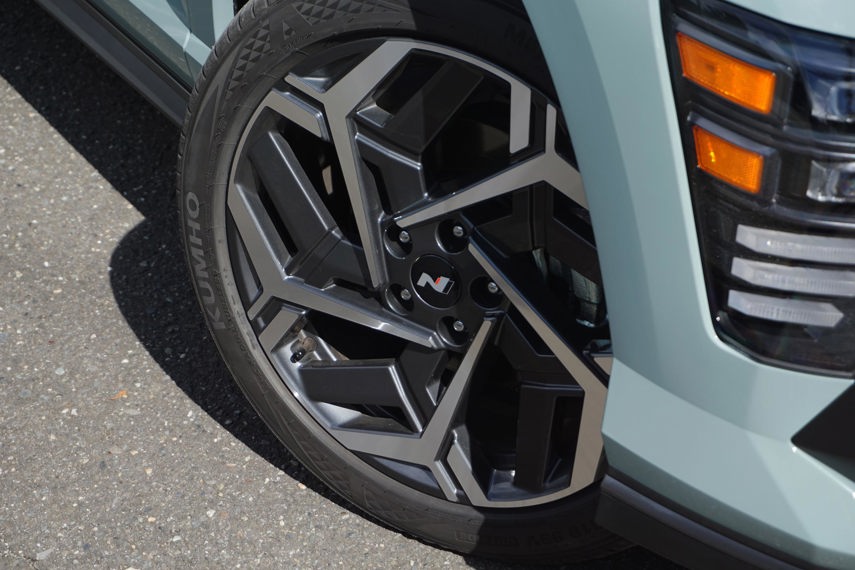
The second-gen Kona isn’t going to stir a driver’s soul – at least not unless another hotted up version from Hyundai’s N performance division arrives in due course. Instead, it’s all about the basics, which this subcompact crossover happens to do well. (There’s also something to be said for its tidy proportions, which make the Kona more engaging than most offerings like it.)
When it comes to mechanical components, just about everything carries over from the last one. That means most trims make do with a 2.0L four-cylinder gas engine that makes 147 hp and 132 lb-ft of torque, while the range-topping N Line version relies on a turbocharged 1.6L unit that’s good for 190 hp and 195 lb-ft of torque. The former is paired with an automatic continuously variable transmission (CVT), just as it was before, while the stronger of the two has ditched the dual-clutch transmission of old for a conventional eight-speed automatic.
Cruising around the countryside of Quebec’s Eastern Townships, the smoothness of the new transmission was on full display. Whereas dual-clutch units tend to feel a little out of sorts when rolling away from a stop at light to moderate throttle loads, the new eight-speed operates entirely unobtrusively – just as it should. It’s no less urgent, either, working in tandem with the torquey turbo motor and all-wheel drive system to get the Kona up and moving with ease.
While the N Line version tested here rides on massive 19-inch alloys wheels wrapped in low-profile tires, a combination that makes itself known when encountering pressure cracks and potholes, the ride and handling attributes are up there with the segment’s best. The longer wheelbase pays dividends here, too, lending to a little more forgiveness out on the open road.
Features for Days
In addition to the top trim’s new transmission, there’s more technology than before. Features like a digital key system that allows the Kona to be unlocked and started using a connected smartphone, over-the-air (OTA) software update capability, and twin 12.3-inch digital displays – one for instrumentation, the other infotainment – are just some of the stand-outs.
There’s also a robust advanced safety suite – although just like those flashy features, it’s not standard fare – that includes everything from forward collision warning to lane-keeping assistance and adaptive cruise control. The former also adds junction turn assist functionality that warns of oncoming traffic when making a left, while the brand’s camera-based blind-spot monitoring that shows a live look at either side of the vehicle in the instrument display is offered, too.
More basically, stuff like heated front seats, a 12.3-inch touchscreen, and Android Auto and Apple CarPlay connections are standard across the lineup, while more expensive versions of the Kona come with a heated steering wheel, ventilated front seats, an upgraded eight-speaker stereo, and more.
No matter the trim and accompanying features, there’s a sense of purpose to the 2024 Kona that its predecessor lacked. While there are still plenty of hard plastic surfaces inside, the ones here manage to look and feel a little nicer. There’s greater functionality throughout the space, too, with a shelf above the glovebox, a multi-function console with retractable cup holders, and door pockets that can accommodate even oversized bottles. It’s all part of a package that feels far more user-friendly this time around.
A Pricey Proposition
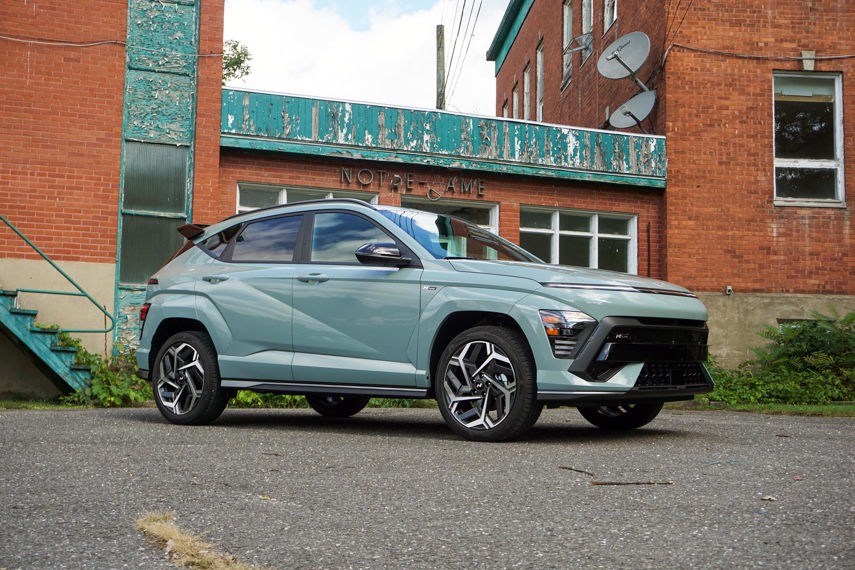
With a starting price of $25,999 – and another $2,000 for the same trim with all-wheel drive – the 2024 Kona is quite a bit more expensive than the version it replaces. That’s an increase of more than $3,000 year-over-year, which isn’t exactly insignificant. The mid-grade Preferred trim is now $28,499 ($30,499 with all-wheel drive), nearly $4,000 more than before, while the Trend package that can be added to it comes with all-wheel drive for its $32,499 asking price. Likewise, the N Line comes with all-wheel drive for its $35,499 asking price, which is more than $5,000 richer than the last one, while adding the Ultimate package to the top trim is $3,000 more. Freight is a further $1,925 and applies to every one of them.
In fairness, the pricing is now more closely aligned with the likes of the 2024 Kia Seltos, which starts at $25,195 before freight and tax and tops out at $38,395; while the 2024 Subaru Crosstrek that was also redesigned starts at $28,995 and peaks at $36,995, with all-wheel drive included across the lineup. And the list goes on, with most other entries in the segment priced similarly.
Final Thoughts
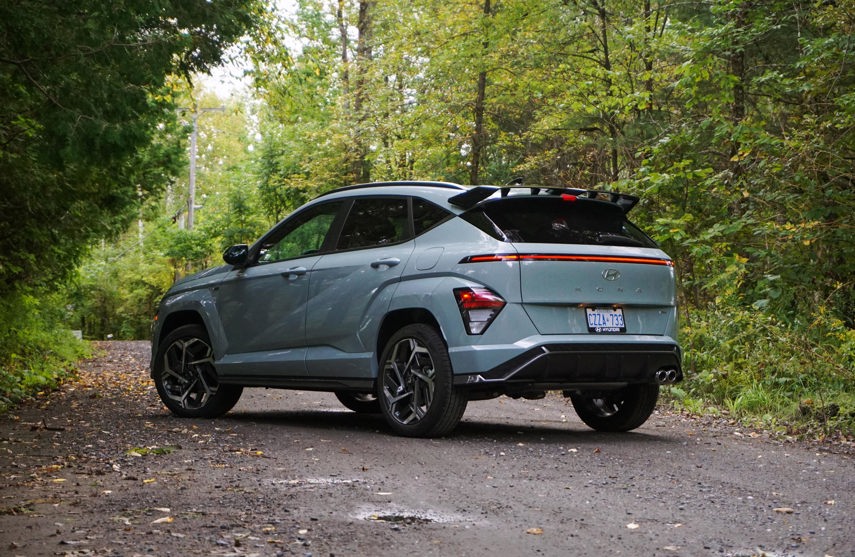
Pricier than ever, the 2024 Hyundai Kona loses one of its key competitive advantages but offsets it with a package that’s more competitive overall. It may not be the same value pick as its predecessor, but it’s also far more spacious and livable than last time, while the new technology that’s been tossed in provides some significant bang for those extra bucks.

